How many missiles are left in Russia's arsenal?
As Russia bombarded Ukraine this week, military observers were left wondering about how many and what types of rockets and missiles Russia still has in its arsenal.
In other words, how long can the Kremlin keep up the barrage?
Some analysts say Russia could be running down its stockpiles of long-range precision weapons as the nearly eight-month-old war drags on and sanctions hit its economy, forcing it to resort to less-accurate ones.
It remains unclear if Russia has enough weapons to continue the strikes against Ukraine with the same intensity that began following the October 8 explosion on the Kerch Bridge to the Moscow-annexed Crimean Peninsula.
Here's a look at what is known — and what's not — about Russia's arsenal.

What does Russia claim to have left?
Russian officials have said the military has sufficient stockpiles of long-range missiles and that factories are churning out more, rejecting the West's claims its supplies are shrinking.
The Russian military hasn't said how many rockets and missiles it has fired, nor how many are left, and there is no data to independently assess the state of their arsenal.
President Vladimir Putin recently chaired a meeting to discuss plans for boosting weapons production, but he steered clear of specifics in the introductory remarks that were televised.
What has Russia relied on recently?
When the Russian military unleashed its missile attacks across Ukraine starting on Monday, it drew on the entire scope of its long-range precision weapons: the Kh-55 and Kh-101 cruise missiles fired by strategic bombers, the sea-launched Kalibr cruise missiles and the ground-launched Iskander missiles.
Russian forces have also repeatedly used the S-300 surface-to-air defence missile systems for striking ground targets, which was seen by some observers as a sign of a Russian weapons shortages.
Its repurposing of air defence systems and anti-ship missiles suggests it is running low on more-advanced missiles that are intended to hit ground targets, said a fellow at the Washington-based Center for Strategic and International Studies, Ian Williams.
Mr Williams said strikes from a Russian S-300 air defence system didn't have the "oomph to really hit hardened military targets" nor the "accuracy in a land attack role to even strike the building you want to hit".
"This really is just firing them into the ether and seeing where they land," he said.
Their use, however, could be explained by an abundant stock of older, subtypes of such missiles, which were superseded by more-advanced air defence weapons, as well as the military's desire to keep more expensive, advanced long-range missiles for priority targets.
While numbers are hard to obtain, how Russia is using its weapons is telling.
In a recent strike in Mykolaiv, a surface-to-air missile was used to hit a target on the ground.
London-based International Institute for Strategic Studies' senior fellow for military aerospace, Douglas Barrie, called that "a sure sign that missile stocks are running low".
What is Washington saying?
While the Biden administration says there is evidence that Russia has depleted stocks of its most-efficient weapons, US officials have said there is no sign Moscow is ready or willing to relent in its recent barrages against civilian areas in Kyiv and other Ukrainian cities.
It was not immediately clear what the US thinks Russia might have left in its arsenal.
However, two officials said US government analysts had noted with interest that Russia had used cruise missiles, and not the less-expensive, shorter-range artillery or rockets, in the aftermath of the Kerch Bridge blast.
That choice, the officials said, could indicate that Russia is running low on cheaper, reliable, mid-range weapons and is having trouble replenishing its stockpiles due to sanctions and supply chain disruptions.
The relative calm that Kyiv enjoyed prior to the Kerch Bridge incident may have been a sign that Russia was trying to conserve its limited resources, according to the officials, who spoke on condition of anonymity to discuss internal assessments of Russia's military strength.
What's behind the choice of targets?
Firing large numbers of inaccurate missiles could be intended to clutter air defences while Russia uses its best missiles for high-value targets and key infrastructure.
However, Mr Williams suggested that Moscow could also be acting strategically, knowing its barrage will hit civilian targets in the hopes of driving up panic in Ukraine and pushing Kyiv to accept a ceasefire favourable to Russia.
"It's becoming more and more clear that, as they say, the cruelty is the point," he said.
- X (formerly Twitter)
Related Stories
Australia's ambassador to russia working from home as embassy numbers dwindle.
UN General Assembly slaps down Russian annexation of Ukraine regions 143-5
- Defence and National Security
- Russian Federation
- United States
- Unrest, Conflict and War
Programs submenu
Regions submenu, topics submenu, leadership 2024, csis-csds transatlantic dialogue on the indo-pacific, chinese interference in taiwan's 2024 elections and lessons learned, the political pressure behind scotland on the ballot.
- Abshire-Inamori Leadership Academy
- Aerospace Security Project
- Africa Program
- Americas Program
- Arleigh A. Burke Chair in Strategy
- Asia Maritime Transparency Initiative
- Asia Program
- Australia Chair
- Brzezinski Chair in Global Security and Geostrategy
- Brzezinski Institute on Geostrategy
- Chair in U.S.-India Policy Studies
- China Power Project
- Chinese Business and Economics
- Defending Democratic Institutions
- Defense-Industrial Initiatives Group
- Defense 360
- Defense Budget Analysis
- Diversity and Leadership in International Affairs Project
- Economics Program
- Emeritus Chair in Strategy
- Energy Security and Climate Change Program
- Europe, Russia, and Eurasia Program
- Freeman Chair in China Studies
- Futures Lab
- Geoeconomic Council of Advisers
- Global Food and Water Security Program
- Global Health Policy Center
- Hess Center for New Frontiers
- Human Rights Initiative
- Humanitarian Agenda
- Intelligence, National Security, and Technology Program
- International Security Program
- Japan Chair
- Kissinger Chair
- Korea Chair
- Langone Chair in American Leadership
- Middle East Program
- Missile Defense Project
- Project on Fragility and Mobility
- Project on Nuclear Issues
- Project on Prosperity and Development
- Project on Trade and Technology
- Renewing American Innovation Project
- Scholl Chair in International Business
- Smart Women, Smart Power
- Southeast Asia Program
- Stephenson Ocean Security Project
- Strategic Technologies Program
- Transnational Threats Project
- Wadhwani Center for AI and Advanced Technologies
- All Regions
- Australia, New Zealand & Pacific
- Middle East
- Russia and Eurasia
- American Innovation
- Civic Education
- Climate Change
- Cybersecurity
- Defense Budget and Acquisition
- Defense and Security
- Energy and Sustainability
- Food Security
- Gender and International Security
- Geopolitics
- Global Health
- Human Rights
- Humanitarian Assistance
- Intelligence
- International Development
- Maritime Issues and Oceans
- Missile Defense
- Nuclear Issues
- Transnational Threats
- Water Security
Russia Isn’t Going to Run Out of Missiles

Photo: CHRISTOF STACHE/AFP/Getty Images
Commentary by Ian Williams
Published June 28, 2023
Long-range missile strikes against Ukrainian cities and infrastructure have been a prominent and persistent aspect of the Kremlin’s war against Ukraine. Earlier this year, the CSIS report Putin’s Missile War found that Russian missile attacks in 2022 had caused major damage to Ukraine’s economy and infrastructure but had failed to achieve the kind of decisive strategic effects that Moscow had likely sought. Into 2023, Russia has persisted in expending expensive, long-range missiles in regular attacks against a variety of civilian and military objects across Ukraine. The focus of these strikes regularly shifts and their intensity has ebbed and flowed, as has the quality of employed munitions.
However, Russia’s continued strike campaign in 2023 has made one thing quite clear: it is unrealistic to expect Russia to ever “run out” of missiles. Despite sanctions and export controls, it appears likely that Russia will be able to produce or otherwise acquire the long-range strike capacity necessary to inflict significant damage upon Ukraine’s people, economy, and military. Ukraine’s air defenses have performed remarkably well under challenging circumstances. Nevertheless, the Russian military has continued trying to identify gaps and seams to exploit to gain an advantage.
There is no one-off fix for this problem. Sanctions and export controls can, at most, limit the quantity and quality of strike assets Russia can acquire. The most reliable counter is sustained Western support for Ukrainian air defense forces for the duration of the conflict. The continued, steady provision of air defenses into the foreseeable future will save lives, reduce costs of future reconstruction, and help end the war more quickly by enabling Ukraine’s counteroffensive in the face of superior Russian airpower. Moreover, providing air defenses has also forced Western countries to scale up production of these systems, which could have long-term benefits for Western defense readiness.
Russia’s Latest Assault
In May, Russia renewed its long-range drone and missile attacks on Ukrainian cities. This surge in activity came after a relative period of lull in March and April, following Moscow’s furious yet unsuccessful strike campaign aimed at collapsing Ukraine’s electric grid last winter. Unlike that singularly focused effort, Russia’s recent spate of missile and drone attacks since May has been aimed at a seemingly broader and less predictable target set.
For instance, Russia has used some of its most advanced and expensive missiles in a failed bid to destroy one of Ukraine’s U.S.-German-provided Patriot batteries protecting Kyiv. Moscow likely believed that the prompt destruction of a Patriot battery—one of the costliest weapon systems Ukraine has received—would discourage continued Western military aid. However, this line of attack backfired as the Patriot battery survived nearly unscathed. The Patriot battery reportedly shot down 100 percent of the 34 Iskander and Kinzhal quasi-ballistic missiles Russia has fired at Kyiv as of June 28, weapons that Moscow had once touted as impervious to air and missile defenses.
In other instances, assessing what Russia has been aiming at has been more challenging since most projectiles get shot down. Targets, though, seem to include a mix of critical infrastructure, command and control installations, and other military and civilian targets. Kyiv has borne the brunt of Russia’s latest assault. Still, Russia has, in more recent weeks, expanded its scope to other areas, possibly looking to exploit areas of Ukraine where air defense is thinner. On June 10, Russia struck a Ukrainian air base in Poltava with a complex barrage of eight ballistic and cruise missiles and as many as 35 Shahed-36 one-way attack munitions. Ukraine says it shot down only two cruise missiles, while 15 Shahed-136s made it through Ukrainian defenses. Russia has not carried out a major missile attack on a Ukrainian air base since the early months of the war, and likely that the area lacked the same level of air defense as Kyiv. Poltava probably lacks protection from Patriot, currently Ukraine’s only defense against ballistic missiles.
As with much of Russia’s air campaign against Ukraine, civilians have suffered the most. In many cases, damage to civilian areas has resulted from falling debris from intercepted missiles. Although much less destructive than allowing a missile to strike its target, debris from intercepts can still kill, maim, start fires, and otherwise damage property. In other instances, Russia appears to be attacking civilians directly. On June 13, Russia launched a cruise missile attack against Kryvyi Rih . At least one of the four missiles that got through Ukraine’s defenses struck an apartment building, killing 11.
Overall, the performance of Ukraine’s air defenses has steadily improved since the start of the war, particularly against Russian cruise missiles. Throughout much of Russia’s winter campaign against Ukraine’s electric grid, Ukraine’s Air Force reported intercepting around 70–80 percent of Russian cruise missiles. Since May, Ukraine has reported intercepting around 90 percent of Russian cruise missiles and drones (see below). Ukraine has reported downing nearly 80 percent of air and ground-launched ballistic missile attacks nationwide and 100 percent of ballistic missiles attacking areas where ballistic missile defenses (Patriot) are present. Ukraine only has two Patriot batteries. As such, most of Ukraine lacks any protection from ballistic missiles, as shown by the June 10 Iskander-M strike in Poltava and the June 22 Kh-47 strikes around Dnipro, which Ukraine could not stop.
While lacking the focus of prior phases of Russia’s long-range strike campaign, Russia’s current objectives seem primarily aimed at keeping Ukraine off balance during its counteroffensive operations in the South, to force Ukraine to divert air defense capacity to defend its cities. Given the limited supply of Ukrainian air defenses, a generalized and unpredictable strike campaign forces Ukraine to make difficult tradeoffs between defending its cities and critical infrastructure and providing thicker air defense for its troops on the front lines.
SHORAD Concerns
As Ukraine’s spring counteroffensive has gotten underway, observers are concerned that Ukraine is facing a gap in short-range air defenses (SHORAD) for its advancing troops. Russia’s use of attack helicopters like the Ka-52 armed with laser-guided 9K121 “Vikhr” missiles has been of particular concern to attack advancing Ukrainian armor. These missiles have a range of upwards of 12 kilometers, outside the range of many of Ukraine’s SHORAD systems like Strela, Stinger, StarStreak, and Igla variants. Ukraine’s medium-range air defenses, like IRIS-T, Buk, and NASAMs, are stretched between frontline duty and defending rear areas against long-range attacks. UK Defence Intelligence recently noted that Russia had deployed 20 additional attack helicopters to Berdyansk, and that “in the constant contest between aviation measures and countermeasures,” Russia had temporarily gained the upper hand.
Ukrainian Air Defense Performance by Threat Type, May 1–June 26, 2023

It is unclear how long Russia will be able to maintain this advantage, however. Ukraine already seems to be adapting, claiming to have shot down six Ka-52s and one Mi-24 attack helicopter since June 16. Moreover, Wagner forces shot down as many as seven additional Russian helicopters during its recent mutiny, including one Ka-52. To be sure, Russia’s attack helicopters are not a plentiful asset. Russia started the war with around 150 Ka-52s. It is doubtful that all of these were mission capable. In October 2022, UK Defence Intelligence estimated Russia to have had no more than 90 Ka-52s in service at the war’s commencement. Based on visual analysis by independent observers and reports from the Ukrainian Air Force, Russia has lost as many as 60 Ka-52s since the start of the war from enemy fire as well as accidents. The Ka-52 problem is not insurmountable, and Russia’s attack helicopter force cannot sustain the rate of losses they have sustained over the past week. However, ensuring that Ukraine has adequate medium- and short-range air defenses to support its counteroffensive over the coming months will be vital to its success. Moreover, additional long-range strike assets, such as Army Tactical Missile System (ATACMS) ballistic missiles, would enable Ukraine to better target the bases Russia is using to house and maintain its attack helicopters, many of which are within the borders of Ukraine.
Russia’s Evolving Strike Complex
As early as March 2022, there was much conjecture that Russia’s supply of precision-guided missiles was dwindling . These reports may not have been entirely off the mark. Russia probably did quickly expend the portion of its long-range missile that it had initially allocated to its “special military operation.” Nevertheless, Russia maintained a steady drumbeat of missile strikes against Ukraine, likely by pulling munitions allocated to other theaters and drawing down its strategic reserves. Moreover, Russia has repurposed various surface-to-air and anti-ship missiles for land attack roles. Russia has also continued to manufacture missiles throughout the war, and evidence suggests that most (possibly all) Russian cruise missiles it has in its current inventory come from postwar production.
The exhaustion of prewar missile stockpiles has impacted the composition of current Russian strike salvos. Compared with previous phases of Russia’s air war, the composition of Russian missile attacks has trended away from high-end missile systems like cruise missiles toward cheaper, less capable “low-end” systems like Shahed-136 one-way attack munitions (see below). In the first three months of 2023, during the tail end of Russia’s strike campaign against Ukraine’s electric grid, Shahed-136s accounted for around 40 percent of long-range projectiles fired at Ukraine. Since April, 61 percent of long-range munitions Russia has employed have been Shahed-136 one-way attack munitions. Compared to cruise and ballistic missiles, Shahed-136 are generally easier to shoot down and more vulnerable to cheaper defenses like the German-made Flakpanzer Gepard and other gun-based systems. The Shahed-136’s warhead weight is also only between that of a cruise missile like Kh-101, and therefore causes less damage when they do make it through defenses.
However, the decline in the quality of Russian long-range strike salvos is unlikely to continue. Rather, the overall composition of Russian strike packages will likely level off as Russian missile use becomes fully tethered to how many missiles it can produce. But it is improbable that Russian production of higher-end cruise and ballistic missiles will ever fall to zero. Despite Western sanctions and export controls of key microelectronic components, Russia has been able to find workarounds to continue producing missiles. In May, Ukrainian intelligence estimated that Russia currently manufactures around 60 cruise missiles, five Iskander ballistic missiles, and two Kinzhals monthly. In June, President Zelensky noted that Ukraine continues to find Western-made microelectronic components amongst the wrecks of Russian missiles. These components are likely finding their way into Russia via friendly third parties such as China.
The United States and Europe can and should seek ways to further restrict the flow of dual-use tech components to Russia. It is, however, unrealistic to expect they will be able to completely deprive Russia of the components it needs to manufacture missiles. Sanctions and export controls have never prevented proliferation by a determined state, let alone one with Russia’s size and economic reach. What they can do is make it harder and more expensive, which would limit the number of missiles it can produce. Regardless of how many missiles the Kremlin produces today, it wishes it could make more. Export controls can help limit that potential.
But the upshot is that Russia will continue having the capacity to build missiles and drones and will continue to fire them at Ukraine. This reality will not change until the war ends. Meanwhile, active air defense remains the most reliable counter to Russian missile attacks, requiring continued support and replenishment from Ukraine’s international partners.
Composition of Russian Missile Attacks on Ukraine, January 1–March 31, 2023

Composition of Russian Missile Attacks on Ukraine, April 1–June 22, 2023

Folks Are Getting It
The good news is that Ukraine’s partners seem to understand the air defense imperative and are responding. Ukraine’s most recent military aid packages have been heavy on air defenses.
Since May, the United States announced it would supply Ukraine’s Armed Forces with additional rounds for NASAMS and Patriot, Avenger air defense and Stinger missiles, and HAWK air defense systems. The United States is also supplying Ukraine with older AIM-7 Sparrow missiles, which have been made compatible with Ukraine’s Buk M2 systems, for which Ukraine has ample launchers though few remaining interceptor missiles.
On June 15, the United Kingdom announced a new multinational fund that would be used to procure “hundreds of short and medium range air defense systems” for Ukraine, noting these deliveries would consist “largely of Soviet-era missiles.” The United Kingdom had also announced in mid-May that it would provide additional air defenses to Ukraine, though it did not specify the type.
French president Macron also recently announced that a French/Italian-provided SAMP/T system is now active in Ukraine, protecting “key installations and lives.” Germany delivered the second of four promised IRIS-T SLM air defense systems in April, along with an additional TRML 4D radar. Berlin also announced on June 24 that it plans to provide Ukraine with 45 more Gepard Flakpanzer systems, more than doubling the number Ukraine currently operates.
These contributions to Ukraine, while reducing national stockpiles of munitions in the short term, have the added benefit of bolstering the production lines of several key air defense systems. Having warm production lines for these complex systems could boost U.S. and allied defense readiness in the long term over and above the risks of near-term drawdowns.
For instance, the U.S. Army expects Stinger production to rise by 50 percent by 2025. As part of that ramp-up, at least one critical component of the Stinger has been redesigned in such a way as to overcome current supply chain issues. The United States is also increasing the production of Patriot systems. There are also significant increases in NASAMS production, and the United Kingdom recently announced it was restarting production of its Starstreak air defense system.
No Permanent Fix
Looking ahead, there is no simple solution to the Russian missile problem. Russia will continue to produce and acquire missiles and one-way attack munitions and use them to target Ukraine. Sanctions and export control can make this harder and costlier for the Russians, but they will not stop them. As long as the war continues, Ukraine must maintain a robust air and missile defense, which will require steady support from the United States and its many other international partners.
To this end, Western defense industrial capacity for everything from air defense interceptors to precision-guided munitions needs to be scaled up and new supply chains built. This process will not only help the United States maintain the steady support that Ukraine needs to win the war as quickly as possible, but it will also leave the United States and its allies in a stronger position to deter and defeat future threats.
Ian Williams is a fellow in the International Security Program and deputy director of the Missile Defense Project at the Center for Strategic and International Studies in Washington, D.C.
Commentary is produced by the Center for Strategic and International Studies (CSIS), a private, tax-exempt institution focusing on international public policy issues. Its research is nonpartisan and nonproprietary. CSIS does not take specific policy positions. Accordingly, all views, positions, and conclusions expressed in this publication should be understood to be solely those of the author(s).
© 2024 by the Center for Strategic and International Studies. All rights reserved.

Ian Williams
Programs & projects.
Advertisement
Supported by
How Was Russia Able to Launch Its Biggest Aerial Attack on Ukraine?
Western and Ukrainian officials have said Moscow’s stockpile of missiles was dwindling. But the assaults this week raise questions about that.
- Share full article

By Lara Jakes and Marc Santora
The 96-missile barrage fired across Ukraine on Tuesday was Russia’s biggest aerial attack of the war so far. But it followed months of assertions by Western and Ukrainian officials that Moscow’s stockpile of missiles and other weapons was rapidly dwindling.
Whether the assault on infrastructure targets was long planned, as Ukrainian commanders say they believe, or served as a deadly response to Kyiv’s recapture of the city of Kherson last week, the widespread attack raises questions about how much Russia’s arsenal may be depleted and whether Moscow will endure by finding alternative sources of weapons.
The Ukrainian defense minister, Oleksii Reznikov, said last month that Russia had burned through nearly 70 percent of its prewar cache of the kinds of missiles that were largely used in Tuesday’s attack: Iskander, Kalibr and air-launched cruise missiles. At the time, Mr. Reznikov said Russia had only 609 of those missiles left, though none of the figures could be independently verified.
An intelligence report by the British Defense Ministry dated Oct. 16 said a large-scale attack on Ukrainian civilian infrastructure six days earlier had most likely degraded Russia’s long-range missile stocks, “which is likely to constrain their ability to strike the volume of targets they desire in future.”
Since spring, Pentagon officials have suggested that Moscow was low on precision-guided missiles , having run through its supply “at a pretty fast clip,” as a national security spokesman, John F. Kirby, said in May .
How, then, did Russia manage to launch what Linda Thomas-Greenfield, the U.S. ambassador to the United Nations, described as perhaps “the widest-scale missile attack since the beginning of the war”?
Here are four possible scenarios.
Russia is turning to Iran and North Korea for weapons, U.S. officials say.
At the Pentagon on Wednesday, Defense Secretary Lloyd J. Austin III said Russia was struggling to replenish its missile stockpile to keep up with battlefield demands, “so they’re reaching out to Iran, they’re reaching out to North Korea.”
“I do think that those countries will probably provide them some capability,” Mr. Austin said.
The swarms of Iranian-made drones that are attacking Ukraine — most notably, the long-range Shahed series that can carry an 88-pound warhead and crash into targets in “kamikaze” strikes — have been Russia’s newest weapon in the conflict.
The Ukrainian Air Force said it had shot down 10 Shahed drones during Tuesday’s attacks.
This month, a spokesman for the Ukrainian Air Forces Command said it was also expected that Iran would send ballistic missiles to Russia. The spokesman, Yurii Ihnat, said it was unknown how many missiles Tehran might give Moscow, but he added that the weapons likely to be sent would be “fairly recently” manufactured, with a range of about 300 kilometers to 700 kilometers.
The United States has accused North Korea of secretly shipping rockets and artillery shells to Russia, although Mr. Kirby said this month that it was unclear if the munitions had been delivered.
Both North Korea and Iran have denied supplying Russia with weapons since the start of the war.
Russia may be building more missiles.
Last month, President Vladimir V. Putin of Russia announced domestic efforts to ramp up production of equipment and systems “associated with providing support for the special military operation” in Ukraine.
Janes, a defense intelligence firm, said Russia very likely stockpiled microchips and other technology necessary to build precision missiles before invading Ukraine in February, possibly starting years ago, given Moscow’s deteriorating relations with the West after its illegal annexation of Crimea in 2014 .
The Janes analysis, provided on Thursday to The New York Times, noted that such microelectronic components were also used for civilian purposes and that Russia may have obtained them through third parties, such as states or private entities willing to risk the penalty of U.S. sanctions if caught.
Russia probably began producing high numbers of Iskanders, Kalibrs, and cruise missiles before the invasion, the analysis said.
“They are likely being produced as we speak, since the economy is on a near war footing and many plants associated with the Russian military industrial complex are working in three shifts and even on weekends,” the Janes analysis said.
Russia is using air defense missiles to launch attacks, Ukraine says.
In a smaller follow-up strike on Thursday, Russia fired at least 10 S-300 antiaircraft guided missiles against cities near the front line, according to the Ukrainian Air Force.
Built by Russia and exported across Asia and Eastern Europe — including to Iran and Syria, and to Crimea — the S-300 surface-to-air rocket was first designed in 1978 for protection against incoming air assaults. More recent generations of the missile can hit aircraft, drones and ballistic missiles .
Ukraine is also using S-300s , from its own stash and donations supplied by other former Soviet satellite states, to defend against Russian air attacks. Fragments from an S-300 rocket that was launched to protect against incoming Russian missiles on Tuesday have been blamed for unintentionally killing two people in a Polish village near Ukraine’s border, said NATO, American and Polish officials.
But Russia’s increasing reliance on the S-300 as an attack weapon against ground targets in Ukraine has been one signal to military officials and experts that it is running out of its cruise missiles or other, more conventional offensive weapons.
Russia may have been holding some weapons in reserve for war against NATO.
Few, if any, Western officials have a clear account of the status of Russia’s arsenal or know precisely how many missiles remain in its stockpile, said Mark. F. Cancian, a former Marine and White House weapons strategist who is now at the Center for Strategic and International Studies in Washington.
But, he said, Western militaries believe Russia has long kept a reserve of missiles and other weapons on hold in case it goes to war with NATO.
“They apparently have a withhold for a notional NATO attack,” Mr. Cancian said on Thursday, “which we would regard as absurd, but they regard it as a real possibility.”
“So they’re holding back some part of their inventory for that,” he said.
It is not known if Russia may have depended on those reserves for Tuesday’s strikes.
Lara Jakes is a foreign correspondent focused on the war in Ukraine. She has been a diplomatic and military correspondent in Washington and a war correspondent in Iraq, and has reported and edited from more than 60 countries over the last 25 years. More about Lara Jakes
More about Marc Santora
Our Coverage of the War in Ukraine
News and Analysis
China’s top leader, Xi Jinping, and Russia’s foreign minister, Sergey Lavrov, met in Beijing . The visit came days after the United States threatened new sanctions against Chinese companies if they aided Russia’s war in Ukraine.
The head of the U.N. nuclear watchdog agency has condemned recent drone strikes at the Zaporizhzhia Nuclear Power Plant , saying “such reckless attacks significantly increase the risk of a major nuclear accident.”
Russian rockets slammed into residential buildings in Kharkiv, Ukrainian officials said, killing at least seven people and injuring at least 11 more in the latest assault on Ukraine’s second-largest city .
Conditional Support: Ukraine wants a formal invitation to join NATO, but the alliance has no appetite for taking on a new member that would draw it into the biggest land war in Europe since 1945.
‘Shell Hunger’: A desperate shortage of munitions in Ukraine is warping tactics and the types of weapons employed, and what few munitions remain are often mismatched with battlefield needs.
Turning to Marketing: Ukraine’s troop-starved brigades have started their own recruitment campaigns to fill ranks depleted in the war with Russia.
How We Verify Our Reporting
Our team of visual journalists analyzes satellite images, photographs , videos and radio transmissions to independently confirm troop movements and other details.
We monitor and authenticate reports on social media, corroborating these with eyewitness accounts and interviews. Read more about our reporting efforts .
- Today's news
- Reviews and deals
- Climate change
- 2024 election
- Fall allergies
- Health news
- Mental health
- Sexual health
- Family health
- So mini ways
- Unapologetically
- Buying guides
Entertainment
- How to Watch
- My watchlist
- Stock market
- Biden economy
- Personal finance
- Stocks: most active
- Stocks: gainers
- Stocks: losers
- Trending tickers
- World indices
- US Treasury bonds
- Top mutual funds
- Highest open interest
- Highest implied volatility
- Currency converter
- Basic materials
- Communication services
- Consumer cyclical
- Consumer defensive
- Financial services
- Industrials
- Real estate
- Mutual funds
- Credit cards
- Credit card rates
- Balance transfer credit cards
- Business credit cards
- Cash back credit cards
- Rewards credit cards
- Travel credit cards
- Checking accounts
- Online checking accounts
- High-yield savings accounts
- Money market accounts
- Personal loans
- Student loans
- Car insurance
- Home buying
- Options pit
- Investment ideas
- Research reports
- Fantasy football
- Pro Pick 'Em
- College Pick 'Em
- Fantasy baseball
- Fantasy hockey
- Fantasy basketball
- Download the app
- Daily fantasy
- Scores and schedules
- GameChannel
- World Baseball Classic
- Premier League
- CONCACAF League
- Champions League
- Motorsports
- Horse racing
- Newsletters
New on Yahoo
- Privacy Dashboard
How many missiles does Russia have left?
People have been having this argument since the beginning of Russia’s full-scale invasion of Ukraine.
Western claims that Russia is running out of advanced, high-precision missiles have floated in the news since March . But more than 10 months into the all-out war, Russian missiles continue to rain down on Ukrainian cities.
The question of how many of them are left became especially stark in the past three months, when Russia began pounding Ukraine’s energy grid with mass attacks every 1-2 weeks. These strikes used a range of different missiles, some repurposed from their primary uses, backed up by Iranian kamikaze drones.
The short answer is, no one outside Russia has indisputable numbers on its stockpiles and production rates. Ukraine released figures but they have not been independently verified. There are also estimates from Western analysts relying on observable clues.
Many estimates agree on one thing: Russia’s strategic bombing campaign is burning through missiles at an unsustainable rate. If it keeps going, Russia should come to a point where it won’t be able to launch mass strikes every 1-2 weeks anymore, even if it keeps dipping into its strategic reserves.
Ukraine says that this point is just three mass strikes away.
But Russia won't run out — as in, literally have no more missiles to shoot, even if its stocks are truly that low. So far, it’s been able to continue manufacturing modern cruise missiles in spite of sanctions and reportedly has a plan to source missiles, in addition to drones, from Iran.
In short, missile strikes will continue but they may soon become less frequent and drones might have to do more heavy lifting. But to achieve its strategic bombing goals – destroy Ukraine’s energy system – Russia needs to be able to hit Ukraine with as much as it can, as often as it can.
Ukrainian estimates
Ukraine’s most detailed claim about Russia’s missile situation came in a chart tweeted by Defense Minister Oleksii Reznikov on Nov. 22, purporting to show the difference in Russia’s arsenal between Feb. 23, before the full-scale invasion, and Nov. 18.
The chart says Russia went from 900 Iskander ballistic missiles to 119, making only 48 new ones in this period. Reznikov claimed that Russia had spent 391 of its 500 Kalibr cruise missiles, while making 120 new ones. For Kh-101 cruise missiles, 132 were used, while 144 were left in stockpile, with 120 newly manufactured.
According to Reznikov, Russia also used half of its stock of 300 Kh-555 cruise missiles, as well as 16 of its 42 Kinzhal ballistic missiles, though it built 16 more to replace them. Anti-ship missiles like the Onyx (Oniks) have been repurposed to fire on Ukrainian land targets as well. Reznikov’s chart said Russia used 123 out of a stockpile of 470.
The chart also provided figures on other missiles — Kh-22s and Kh-32s (pre-war stockpile of 370, with 250 used); and Kh-35s (pre-war stockpile of 500, with 360 more built and 504 used).
A chart tweeted by Ukraine's defense minister on Nov. 22, claiming to list how many precise missiles Russia had had, used and built.
Reznikov’s chart quickly became out of date as Russia launched hundreds of missiles at Ukraine throughout December.
In a more recent, Jan. 4 statement, Vadym Skibitsky, spokesman of the Main Intelligence Directorate of the Defense Ministry, said that Russia had enough advanced missiles left for up to three massive attacks, if each one uses about 80 missiles. Similar estimates were echoed by other Ukrainian officials.
After that, Skibitsky said, Russia would be stuck waiting for the factories to pump out enough for each subsequent attack — at a rate of about 50 cruise missiles produced per month. As for ballistic missiles, Military Intelligence Chief Kyrylo Budanov said Russia is barely making any Iskanders. The production rate for Kinzhals appears to be low as well, according to the defense ministry.
Russia responded to speculations with bravado. Deputy Head of Russia’s Security Council Dmitry Medvedev said in December that the country would ramp up production of new-generation weapons.
Moscow on Dec. 29 boasted that it will never run out of Kalibrs. The statement didn’t mention other types but Russian President Vladimir Putin has repeatedly talked about developing new hypersonic weapons.
Russia then kept bombarding Ukraine through the New Year holiday weekend. Since then, almost two weeks have gone by without a mass strike. But Natalia Humeniuk, Ukraine's Southern Operational Command spokeswoman, said on Dec. 11 that Russia is preparing to unleash another massive missile strike very soon.
Expert analysis on production and use
Ukraine’s estimates should be taken with a grain of salt. It is one of the war’s direct participants and its defense relies on control of information and ability to attract military aid from other countries.
However, Ukraine’s intelligence came out with some of the most pessimistic estimates about how fast Russia can make cruise missiles. And there are publicly available clues in the way Russia uses its missiles that suggest stockpile depletion.
At the start of the full-scale invasion, the most modern missiles took to the air in large numbers. Over time, Russia began mixing in older models, even less accurate ones from Soviet times. In recent barrages, Russia would send its old Kh-55 cruise missiles without payloads, to trip up Ukraine’s air defenses.
An analysis by the Jamestown Foundation said that some Soviet missiles that Russia's been using are no longer reproducible, while others are made at a very low rate.
Russian forces also repurposed anti-ship missiles like the Onyx and anti-air missiles like the S-300 to strike at ground targets, suggesting they’re forced to use what they’ve got.
A few open source investigations at least partly support the claim that lately, Russia’s been using missiles that were manufactured earlier this year, which may indicate stockpile issues.
A team from Conflict Armament Research, a U.K. investigative organization that tracks weapon supplies, analyzed pieces from a Nov. 23 attack — three missiles were Kh-101s whose serial numbers show they were produced just months before the attack. CAR suggested that this may be symptomatic of stockpile challenges for assets like cruise missiles but Russia is still able to produce them.
The Long War Journal, a U.S. publication reporting on and analyzing wars, examined the photographed serial numbers from 16 downed Kh-101s, six of which are thought to have been made in 2022. According to its analysis of limited data, the Long War Journal’s most conservative estimate is that Russia can produce one Kh-101 missile every four days.
Jamestown estimated that Russia's maximum annual production capacity is not likely to be higher than 225 missiles in total, which includes Onyx, Kalibr, Kh-101, 9M729 and Kh-59 cruise missiles and Iskander-M ballistic missiles.
A June article from the Center for European Policy Analysis stated that Russia’s been running its missile factories in overtime. This includes the Novator plant, which made up to 120 Kalibrs and several dozen Iskanders per year before the full-scale invasion, according to CEPA. There is also the Votkinsk plant, which makes Iskander, Yar and Bulava missiles, whose production grew from 50 to 60 missiles per year in 2022.
Interestingly, these appear to be more optimistic estimates than Ukraine’s, whose military intelligence said Russia makes 30 Kh-101s in a single month, along with 20 Kalibrs.
Russia also hoped to receive ballistic missiles from Iran whose military doctrine is centralized around missiles and drones and has a production program for both.
U.S. National Security Council spokesman John Kirby said Russia’s relationship with Iran was becoming a "full-scale defense partnership," with Russia providing advanced tech to Iran as well. Despite initially denying it, Iran supplied Russia with hundreds of Shahed-136 and Shahed-131 kamikaze drones that were used to attack Ukrainian cities.
And yet, Israeli intelligence officials last month told Axios that Iran wants to limit the range of missiles it plans to send to Russia. Last month, Ukrainian Presidential Office adviser Mykhailo Podolyak said Iran had not yet delivered the missiles to Russia and was wavering as a result of diplomatic pressure, the threat of additional sanctions, and internal political strife.
Russia evades sanctions blocking electronics
The most advanced and precise missiles require advanced electronics. Sanctions have been placed on Russia to limit its access to this technology. Even so, Russia seems to have been able to go on producing weapons. Defense intel firm Janes told the New York Times that Russia probably stockpiled microchips before February 2022.
According to an August report by the Royal United Services Institute, more than 450 foreign-made parts have been found in Russian weapons in Ukraine, acquired from the U.S., Europe and Asia in the years before the invasion. Many of the microelectronics found in the weapons were quite old. Western parts were also found in Iran's Shahed drones as well, according to the Conflict Armament Research team.
Moreover, Russia has likely been able to get around restrictions altogether. Reuters cited Russian customs records in reporting how at least $2.6 billion in computer and other electronic components flowed into Russia in 2022, at least $777 million of which were made by Western firms, whose chips have been found in Russian weapon systems.
Middlemen included firms in Turkey, Hong Kong and elsewhere, but there are even customs records showing shipments of components directly from the EU. The European Commission did not reply to Reuters' questions but claimed to take the issue seriously.
In short, export controls have not been effective enough to prevent Russia from getting the parts it needs to build more advanced missiles.
Moscow gave no indication that it plans to stop striking Ukrainian infrastructure. But limited resources may reduce the frequency of the strikes or force Russia to change its strategy.
Recommended Stories
2024 nba mock draft 6.0: projections for every pick following march madness.
With the NCAA tournament behind us, here's an updated look at Yahoo Sports' first- and second-round projections for the 2024 NBA Draft.
Republicans (?!?) are killing a tax cut
In a flip of the usual priorities, Senate Republicans seem likely to kill a set of tax cuts that have already passed the House and are broadly popular. Here's why.
Here’s who will pay for Biden’s student loan cancellations
Cancelling student debt is a windfall for the borrowers who benefit, but taxpayers foot the bill.
2024 NFL Draft guide: 32 teams, 32 needs, picks, best fits and more
What selections does your team have? What areas should it address? Who's the dream fantasy pick? We cover all that and more for every franchise right here.
Mock Draft Monday with PFF's Trevor Sikkema: Cowboys fill needs, Vikings and Broncos land QBs
We continue our 'Mock Draft Monday' series with PFF's Trevor Sikkema joining Matt Harmon the pod. Sikkema provides his five favorite picks from his latest mock draft as well as his least favorite pick. The PFF draft expert also shares what goes into his methodology when crafting a mock, especially as inch even closer to night one of the draft.
Inflation expected to remain elevated as rate cut debate takes center stage
March's CPI report is one of the most important data points the Federal Reserve will consider in its next interest rate decision.
Andrew Siciliano, face of 'Red Zone Channel,' and others out at NFL Network, per report
NFL Network is laying off four of its most popular and talented on-air personalities.
Rashee Rice didn't learn from the past, maybe other NFL players will learn from Rice
Rashee Rice should have taken a lesson from recent history.
2024 Toyota Land Cruiser Preview: Pricing, fuel economy and everything else we know
Everything we know about the all-new 2024 Toyota Land Cruiser, including its price, fuel economy, hybrid power specs and more.
Stephen Strasburg retires after years of injury struggles and months-long standoff with Nationals
Stephen Strasburg made eight starts after signing a $245 million contract in 2019.
Royals owner's wife warns team could move to Kansas after ballpark funding proposal voted down
Marny Sherman, the wife of Kansas City Royals owner John Sherman, warned that Missouri could lose both the Royals and Kansas City Chiefs after a stadium funding proposal was voted down.
USWNT vs. Canada: How to watch the 2024 SheBelieves Cup final tonight
The USWNT face off against Canada in the 2024 SheBelieves Cup final tonight.
Intel's latest AI chip is a direct shot at Nvidia's moneymaker
Intel has debuted its Gaudi 3 chip to take on Nvidia's H100.
Rashee Rice apologizes for 'my part' in crash while injured couple reportedly lawyer up
Rice reportedly owned the Corvette and leased the Lamborghini involved in the crash.
UConn's win over Purdue averages just under 4 million fewer viewers than South Carolina's victory over Iowa
Viewership for Monday night's game was up slightly from UConn's victory a year ago.
Texas' T'Vondre Sweat, projected Day 2 NFL Draft pick, arrested and charged with DWI after crashing SUV
Sweat was the Big 12 Conference defensive player of the year in 2023.
US economy has Wall Street 'borderline speechless' after blowout March jobs report
The March jobs report was the latest piece of economic data to surprise Wall Street analysts and send stocks rallying.
What today's total solar eclipse could mean for your zodiac sign: An astrologer breaks it down
An astrologist weighs in on the 2024 solar eclipse.
Welcome to MLB: Padres rookie strikes out on pitch to helmet, which ump got wrong
Graham Pauley has had better at-bats.
Nike reportedly says it is testing new uniform options as MLB shifts blame, teams complain
MLB had to approve the Nike-designed uniforms before Fanatics produced them.
Explainer: Why Russia's missiles on Ukraine have limited impact
- Medium Text
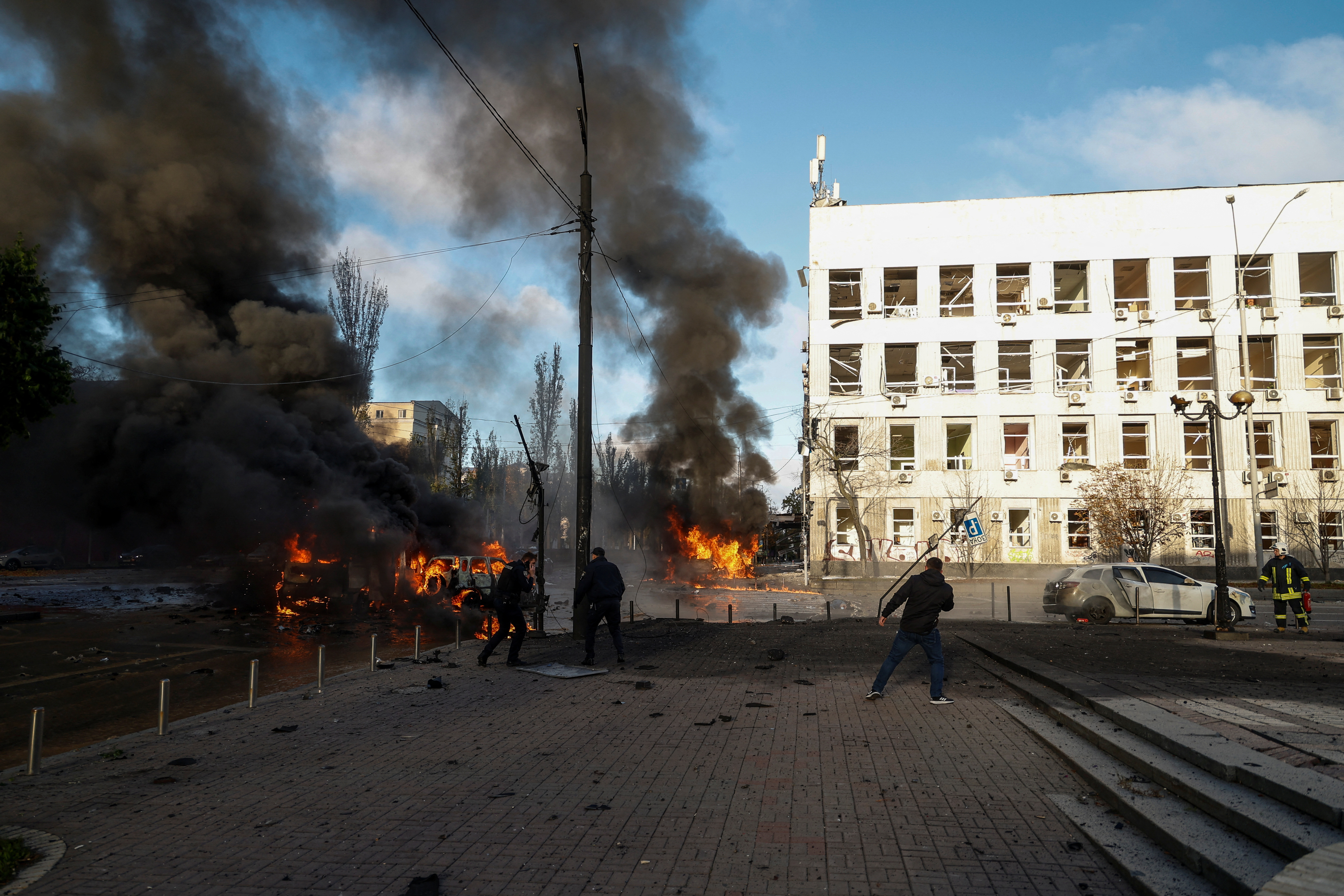
HOW ARE THE ATTACKS PORTRAYED IN RUSSIA?
Can russia keep this up, can ukraine protect itself, what's next.
The Reuters Daily Briefing newsletter provides all the news you need to start your day. Sign up here.
Editing by Mark Heinrich and Alex Richardson
Our Standards: The Thomson Reuters Trust Principles. New Tab , opens new tab

Thomson Reuters
Peter Graff has three decades of experience as a lead writer, editor and correspondent on assignment across Europe, the Middle East, Africa, Asia and the former Soviet Union. Among roles he has held at Reuters, he has served as bureau chief in Kabul, acting bureau chief in Baghdad and a correspondent based in London and Moscow. Previously he worked as a freelance correspondent for publications including Time Magazine, the Financial Times and AFP, based in Nairobi and Tbilisi. He has covered more than a dozen wars including in Chechnya, Rwanda, Sudan, Kosovo, Afghanistan, Iraq and Ukraine, and uprisings that toppled Mobutu, Suharto and Gaddafi. He was part of the team covering the 2011 civil war in Libya for which Reuters was shortlisted for a Pulitzer Prize, and the AFP team covering the 1994-96 First Chechen War for which that agency won France’s Albert Londres Prize.
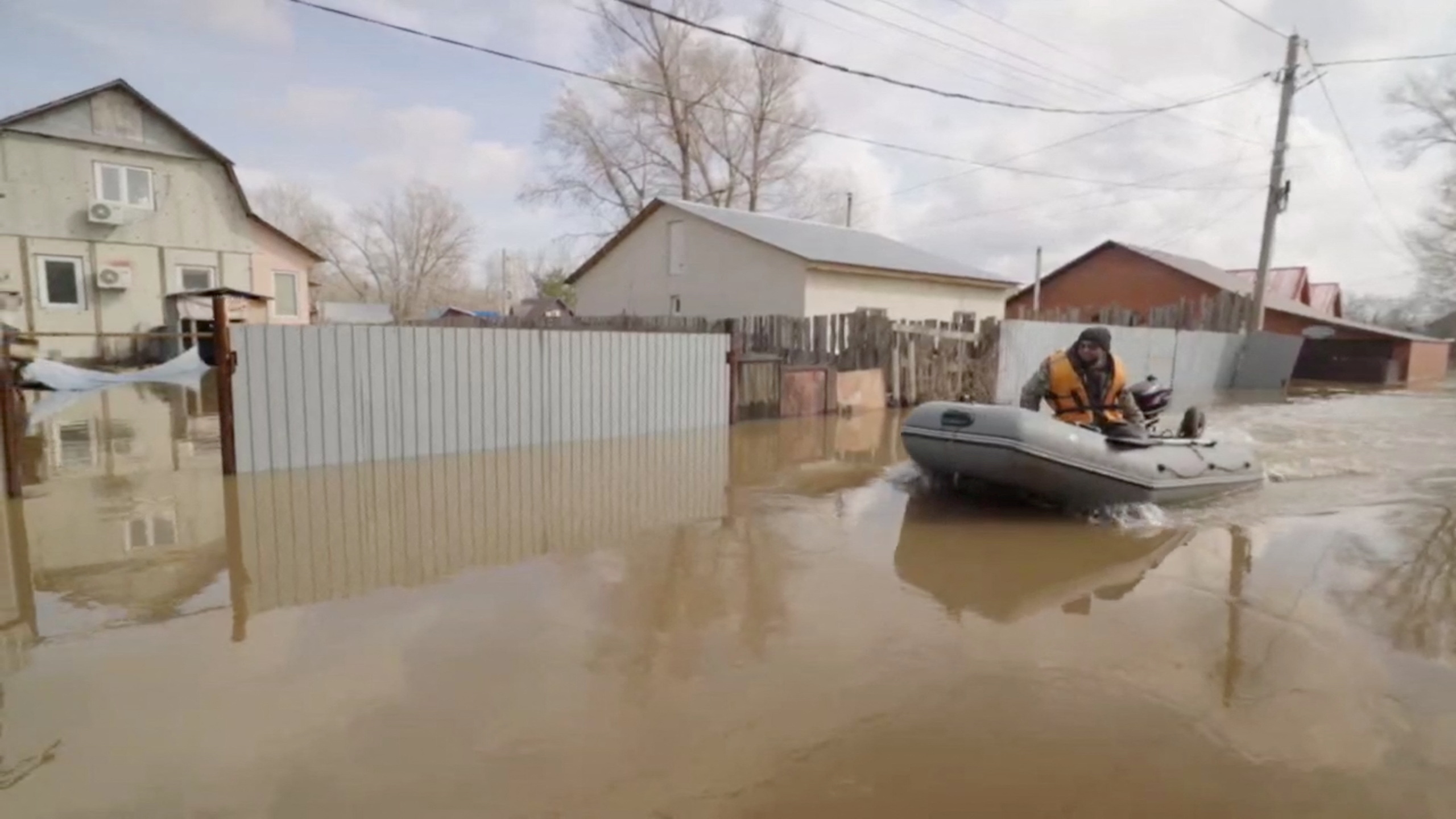
World Chevron
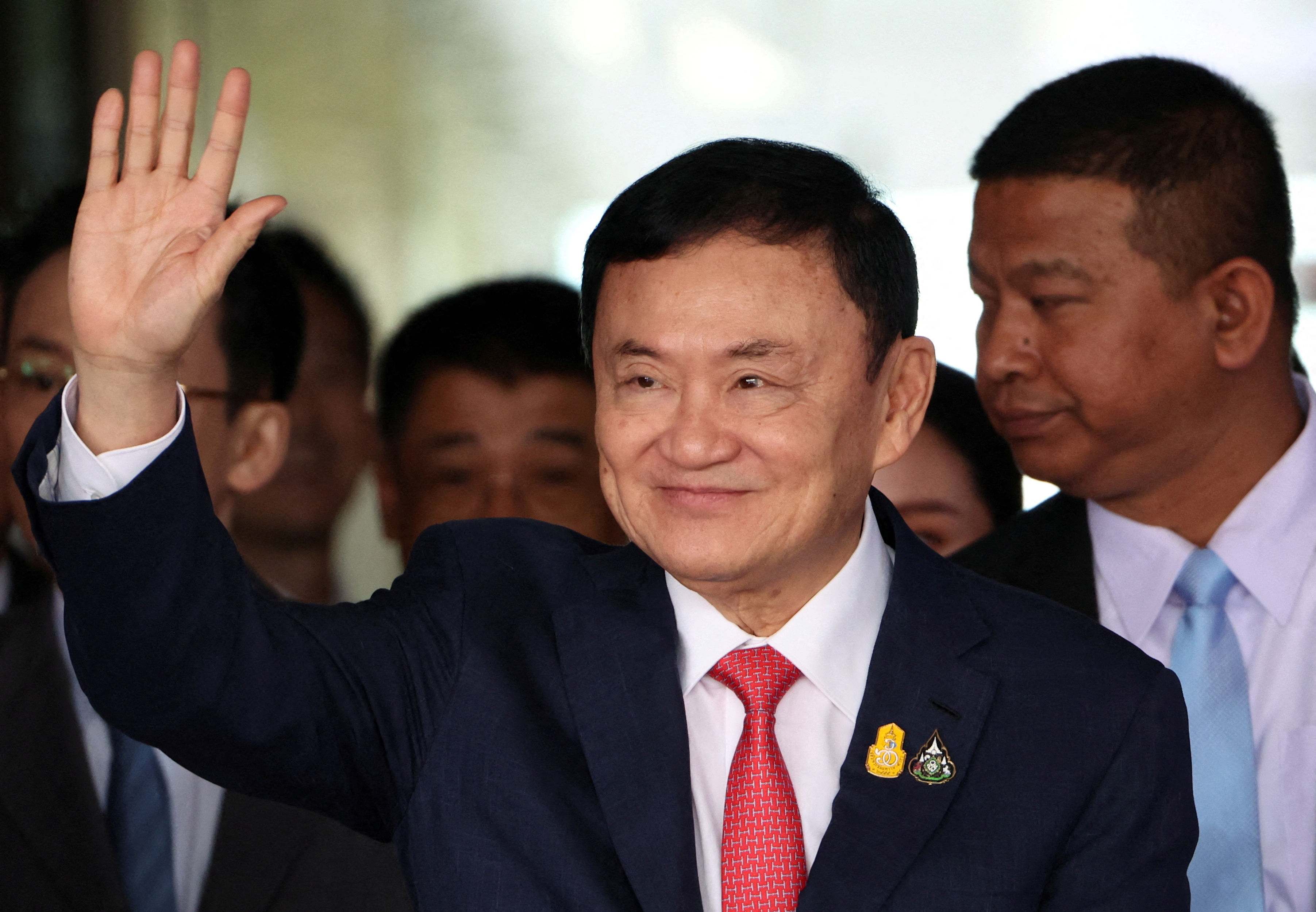
Thailand yet to decide on indicting ex-PM Thaksin in royal insult case, lawyer says
Thailand's attorney-general will postpone a hearing with influential former Prime Minister Thaksin Shinawatra on whether to indict him over a royal insult complaint, his lawyer said on Wednesday.
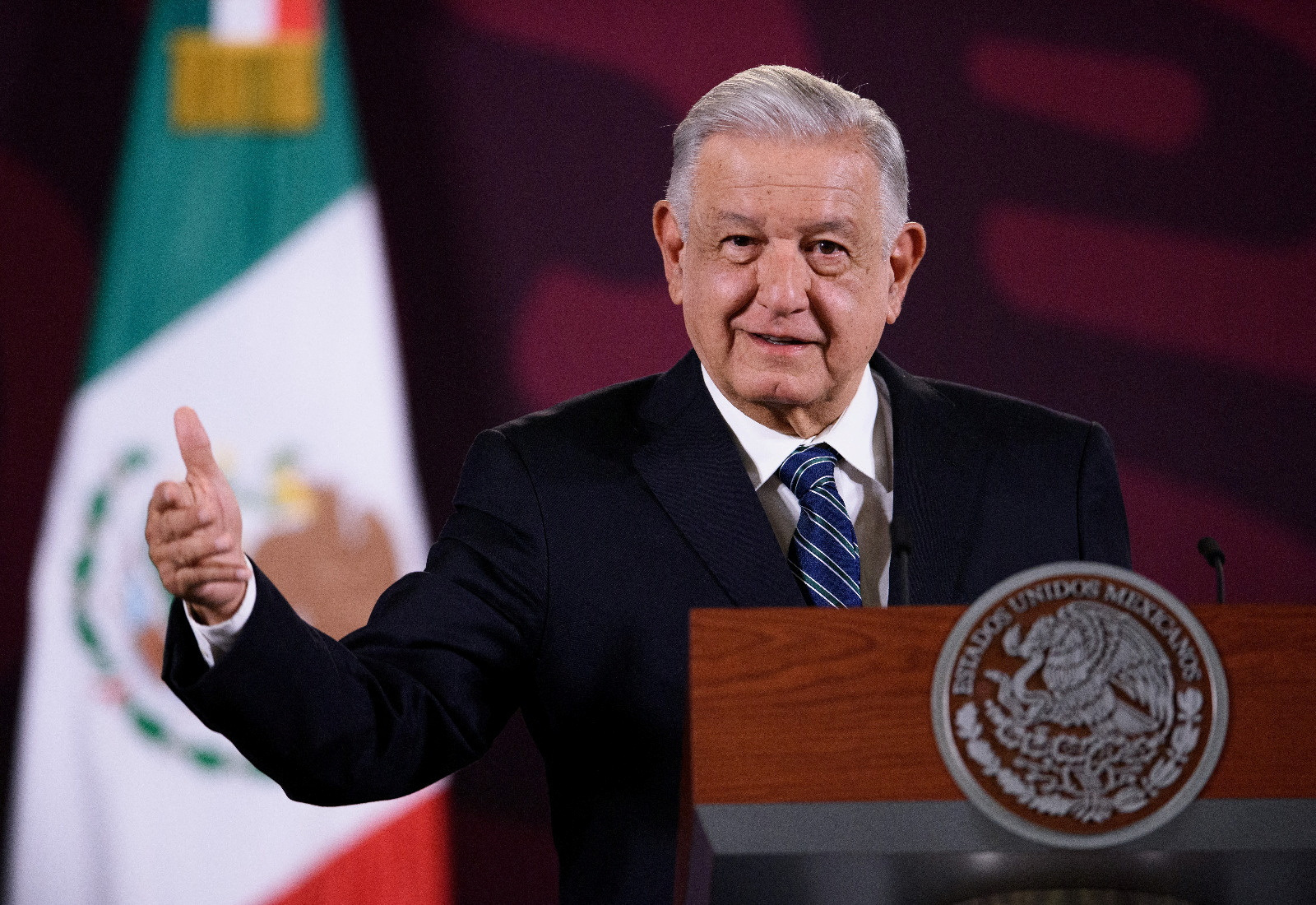
- International
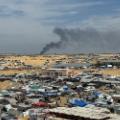
Israel wages war on Hamas

School shooter parents sentencing
May 9, 2023 - Russia-Ukraine news
By Tara Subramaniam , Christian Edwards, Eliza Mackintosh , Aditi Sangal , Adrienne Vogt , Mike Hayes and Tori B. Powell , CNN
Ukrainian Air Force says it shot down 23 Russian cruise missiles
From CNN's Josh Pennington
All but two of 25 cruise missiles fired by Russia against Ukraine overnight Tuesday were intercepted by the country's air defenses, the Ukrainian Air Force said in a statement.
"In total, during two waves of shelling of Ukraine on the night of May 9, 2023, the Russian occupiers launched 25 Kalibr and X-101/X-555 cruise missiles," the statement said, adding that 23 missiles fired from the sea and the air were destroyed.
The Ukrainian military warned earlier this week that Russia is trying to wear down Ukraine's air defenses ahead of an anticipated counteroffensive.

Falling debris: Shrapnel from a downed missile landed in a private yard in Kyiv's Holosiivskyi district, Mayor Vitaly Klitschko said in a statement Tuesday. There was no damage and nobody was hurt, he said. Explosives experts and emergency responders were working at the scene, he added.
The intercepted attacks Tuesday come after Klitschko said Russian strikes early Monday marked Moscow's "most massive" drone attack on the capital.
Ukrainian Eurovision duo launch fundraiser for premature war babies
From CNN's Mariya Knight

Tvorchi, the duo representing Ukraine at this year’s Eurovision Song Contest, have launched a fundraiser for equipment to help Ukrainian babies born prematurely due to war stressors.
The fundraiser is in partnership with Visa and United24, an official fundraising platform launched by Ukrainian President Volodymyr Zelensky.
According to United24, “because of the war, the number of such newborns has increased by at least 15% and behind this figure there are thousands of vulnerable children who were born prematurely and cannot survive without special assistance.”
During the Eurovision opening ceremony on Sunday in the English city of Liverpool, the duo wore costumes with the names and weights of Ukrainian babies born prematurely displayed on their jackets.
“Sofia, 1340 grams. Marichka, 804.6 grams. Nikita, 1280 grams. Alice, 1600 grams. Denis, 900 grams...These names and weights are displayed on our costumes, that we wore on the turquoise Eurovision runway,” they said in an Instagram post Monday. “They belong to children who were born in Ukraine during the war, very tiny. More often, because their mothers experienced stress during pregnancy due to explosions, shelling and a constant sense of threat. “These babies survived — their little hearts were saved by intensive care incubators.”
The goal of the initiative is to attract international support to raise nearly $270,000 to buy 10 incubators for Ukrainian infants, according to the United24 website.
Eurovision is traditionally hosted by the defending champion's country. Ukraine won the contest in 2022 but cannot host it due to the ongoing conflict. The theme of Eurovision 2023 is "United by music" with the first semifinals to start on May 9.
Ukraine shoots down more than a dozen cruise missiles over Kyiv, military says

Ukrainian air defenses destroyed about 15 cruise missiles launched by Russia in the airspace over Kyiv in the early hours of Tuesday, a Ukrainian military official said.
In a Telegram post, Serhiy Popko, head of the city's military administration, said preliminary information indicated there were no casualties and little damage caused.
“In the Holosiiv district, a fire broke out in the yard of a private house as a result of falling debris and the removal of debris on the road in the Shevchenkiv district,” he said. “The launched cruise missiles, most notably of the X-101 (X-555) type, did not reach their targets. The anti-aircraft defense of the capital worked perfectly again!"
Popko said the attack was "carried out by four Tu-95MS strategic bombers from the Caspian Sea region,” in the fifth air assault launched by Russia against Kyiv since the beginning of May.
Some context: The intercepted attacks Tuesday come after Kyiv's mayor said Russian strikes early Monday marked Moscow's "most massive" drone attack on the capital since the invasion began last year. The Ukrainian military has warned that Russia is trying to wear down Ukraine's air defenses ahead of an anticipated counteroffensive.
Russia has little to celebrate on its annual Victory Day as Ukraine war falters. Here's the latest
From CNN staff
It's Victory Day in Russia, where an annual Moscow parade is set to take place in an exhibition of patriotism marking the Soviet Union's role in defeating Nazi Germany in World War II.
The day is the most significant in Russian President Vladimir Putin's calendar, and he has long used it to rally public support and demonstrate the country's military prowess.
But in light of two recent alleged Kremlin drone attacks, deepening fissures between senior Russian officials over war tactics, and an expected Ukrainian spring offensive, tensions in Moscow are at an all-time-high ahead of the second parade since Russia launched its invasion.
Here are the latest developments:
- Muted celebrations: Thousands of people will line the streets of Moscow's Red Square on Tuesday as part of Russia's annual Victory Day parade , when the Kremlin will display a front of military might and grandeur contrasting with its faltering military campaign in Ukraine . But several regions in Russia — many near the border with Ukraine — have scaled down preparations for the May 9 spectacle due to security concerns and a lack of military equipment to display.
- "Most massive attack": Russia launched a wave of strikes on Ukraine early Monday in what Kyiv mayor Vitali Klitschko called its "most massive attack ." The mayor said five people were injured in capital, but no deaths were reported. Other attacks were recorded in Ukraine's Kharkiv and Kherson regions.
- New US aid: The United States is set to announce a $1.2 billion aid package to Ukraine as early as Tuesday, according to a US official familiar with the package. It comes at a critical point with Ukraine’s counteroffensive against Russian forces looming. The package will include drones, artillery ammunition and air defense missiles as well as other capabilities, the official said.
- Wagner resupplies: Yevgeny Prigozhin, head of Russian mercenary group Wagner, said preliminary information indicates that his fighters in the eastern Ukrainian city of Bakhmut have started to receive more ammunition . Prigozhin had repeatedly complained that his units were not receiving enough munitions from Russia’s defense establishment. Last week, he announced they would withdraw from Bakhmut — a threat he now appears to be rowing back on.
- Mariupol mobilization: Kremlin-backed authorities in the occupied Ukrainian city of Mariupol are in the process of mobilizing residents who have Russian passports , the exiled city council claimed on Telegram. Denis Pushilin, head of the Russian-backed self-proclaimed Donetsk People's Republic, which administers Mariupol, signed a decree allowing the mobilization of Russian citizens in the occupied region on March 31.
- Officials' departure: A significant part of the Russian-installed administration of Skadovsk left the occupied city near the Black Sea on Sunday, Ukrainian military officials said. The activities of Skadovsk’s district and city administrations were "suspended," the General Staff of the Armed Forces of Ukraine said in its daily update. On Saturday night, "the occupiers loaded documentation, office equipment, and other property of state institutions into vehicles," before leaving with their families on Sunday morning, the Ukrainian military said.
US set to announce $1.2 billion aid package to Ukraine ahead of counteroffensive
From CNN's Oren Liebermann
The United States is set to announce a $1.2 billion aid package to Ukraine as early as Tuesday, according to a US official familiar with the package. It comes at a critical point with Ukraine’s counteroffensive against Russian forces looming.
The package will include drones, artillery ammunition and air defense missiles as well as other capabilities, the official said.
The package — first reported by the Associated Press — will fall under the Ukraine Security Assistance Initiative (USAI), which means it will be contracted and purchased from manufacturers instead of pulled directly from Defense Department stocks in a drawdown.
Instead of supplying Ukraine with the weapons it currently needs, USAI packages are intended to create a medium and long-term supply for Ukraine.
Last week, the Pentagon announced its 37th drawdown package for Ukraine since August 2021. The $300 million package included additional ammunition for the HIMARS rocket system, artillery and tank ammunition, anti-tank weapons and more.
Russia launched its "most massive" attack with drones Monday, Kyiv mayor says
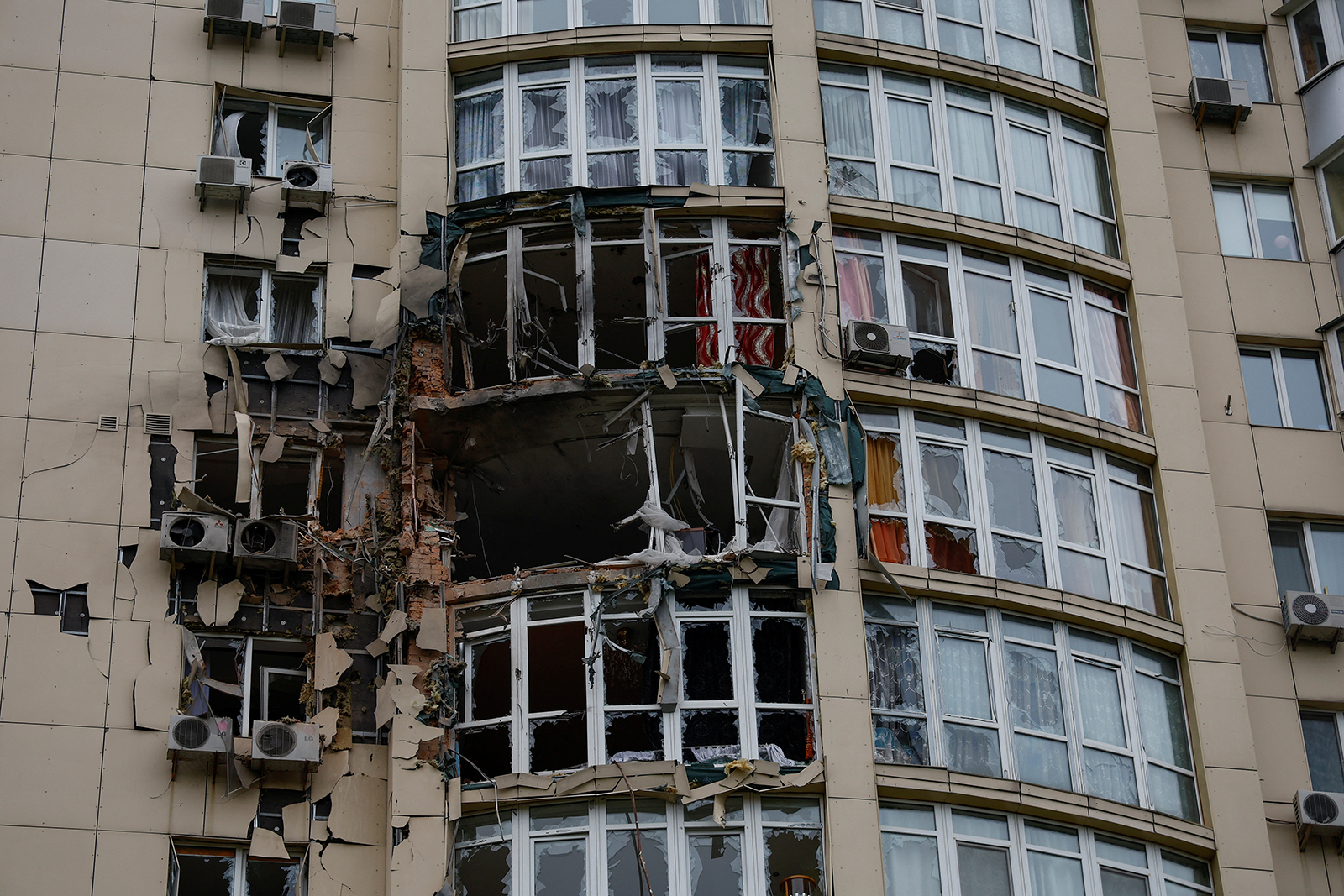
Russia's wave of strikes on Ukraine early Monday was its "most massive" drone attack since the invasion began last year, Kyiv mayor Vitali Klitschko said.
“I visited a high-rise building that was hit by fragments of a Russian drone at night,” Klitschko wrote in a statement on Telegram. “Last night, the barbarians staged the most massive attack with kamikaze drones. Almost 60 'Shaheds' were launched,” more than half of which targeted Kyiv, according to Klitschko.
Other attacks were recorded in Ukraine's Kharkiv and Kherson regions.
The Ukrainian military said it repelled the assault on the capital, the latest in Moscow’s efforts to wear down its air defense system . According to Kyiv's mayor, “36 drones flew to the capital” but were shot down by air defense forces.
“However, debris from several drones damaged some social facilities and a residential high-rise building in Sviatoshyn district,” Klitschko said.
The mayor said the drone attack did not cause any deaths, “but five people were injured in two districts of the city.”
“Three of them were in high-rise buildings. Two victims were hospitalized, one of them underwent surgery. Doctors say that there is no threat to their lives,” he added.
Shahed drones are manufactured in Iran and have been frequently deployed by Russian forces in Ukraine.
Wagner forces in Bakhmut are receiving more ammunition, head of private military group says
From CNN’s Uliana Pavlova
Yevgeny Prigozhin, the head of the private Russian military group Wagner, said on Monday that preliminary information indicates that his fighters in the eastern Ukrainian city of Bakhmut have started to receive more ammunition.
“Ammunition supplies, according to preliminary data, we continue to receive. I haven't seen it in person yet,” Prigozhin said in a voice memo posted to his Telegram channel late on Monday.
Prigozhin has repeatedly complained that his Wagner units are not receiving enough ammunition from Russia’s defense establishment. Last week, he announced they would withdraw from Bakhmut — a threat he now appears to be rowing back on.
Earlier Monday, a Ukrainian commander in Bakhmut said his unit faces “constant” shelling and had seen no evidence of the Russian ammunition shortage that Prigozhin had claimed.
Russia-backed officials depart occupied city on Black Sea, Ukraine's military says
From CNN’s Kostan Nechyporenko in Kyiv
A significant part of the Russian-installed administration of Skadovsk left the occupied city on Sunday, Ukrainian military officials said.
The activities of Skadovsk’s district and city administrations were “suspended,” the General Staff of the Armed Forces of Ukraine said in its daily update.
On Saturday night, “the occupiers loaded documentation, office equipment, and other property of state institutions into vehicles,” before leaving with their families on Sunday morning, Ukrainian military officials said.
The General Staff claims the Russians planned to transport the “documents and looted property," by sea, further into Russian-held territory.
Skadovsk sits on the Black Sea.
The statement said similar activity was occurring in the nearby villages of Krasne, Shevchenko, Shyroke, Ulianivka and Petrivka, as well as in Mykhailivka — some 28 kilometers (17 miles) away.
Mariupol occupiers are mobilizing Russian citizens, city's exiled council claims
Kremlin-backed authorities in the occupied Ukrainian city of Mariupol are in the process of mobilizing residents who have Russian passports , the exiled city council claimed on Telegram.
“Mobilization has begun in Mariupol. This is reported by the city residents themselves,” the statement read, adding that men working in the public sector were the first to receive referrals from the military commissariat for medical examinations.
The Telegram post included a photo of a document which the authors said is a referral, received by a resident.
"Draft boards have started working in Mariupol. The occupiers are already looking for citizens who do not fulfill their 'military obligations'. The enemy plans to conscript men until August," said Vadym Boichenko, the exiled Ukrainian mayor of Mariupol.
Denis Pushilin, head of the Russian-backed self-proclaimed Donetsk People's Republic, which administers Mariupol, signed a decree allowing the mobilization of Russian citizens in the occupied region on March 31.
Please enable JavaScript for a better experience.
Country: Russia
25 items, page 1 of 0, kh-55 (as-15).
The Kh-55 (NATO: AS-15 “Kent) is an air-launched cruise missile developed by the Soviet Union starting in 1971. Originally designed as a strategic system capable of delivering a nuclear warhead 2,500 km, the missile has given rise to several variants. These include the Kh-55SM, an extended range version; the Kh-555, a conventional version; and the...
3M-14 Kalibr (SS-N-30A)
The 3M14 Kalibr (NATO: SS-N-30A) is a Russian land attack cruise missile (LACM) and improved version of the 3M-14E “Club” LACM. The SS-N-30A has an estimated range of around 1,500 to 2,500 km and has become a mainstay in the Russian Navy’s ground-strike capabilities. Kalibr Development Although commonly referred to as the Kalibr cruise missile...
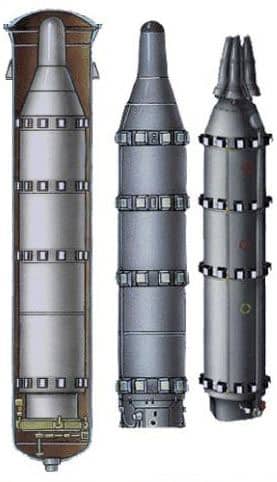
R-27 Zyb (SS-N-6)
The R-27 Zyb (NATO designation: SS-N-6 “Serb”), was a submarine-launched, liquid-fueled ballistic missile developed and deployed by the Soviet Union. Elements of the R-27 are believed to be the basis for some of North Korea’s ballistic missile programs. R-27 Development Development of the R-27 began in 1962 and flight tests began in mid-1965. The missile was first...
RK-55 Granat (SS-N-21)
The RK-55 Granat (NATO: SS-N-21 “Sampson”) is a submarine and ground-launched intermediate range cruise missile produced by the Soviet Union since 1976. RK-55 Development The RK-55 is the submarine/ground-launched component of the “55” series of cruise missiles which also included the Kh-55 air-launched missile. This family of cruise missiles was the Soviet Union’s response to the...
RSM-56 Bulava (SS-N-32)
The RSM-56 Bulava (NATO: SS-N-32) is an intercontinental-range, submarine-launched, solid propellant ballistic missile. Alongside the SS-25 and the SS-27, both land-based ICBMs, the Bulava represents a core component of Russia’s future strategic nuclear force. Development of the program began in the 1990’s with official production contacts going into effect in the 2007-2008 timeframe. The Bulava...
R-29RM Shtil (SS-N-23)
The R-29RM Shtil (NATO: SS-N-23 “Skiff”) is an intercontinental-range, submarine-based, liquid propellant ballistic missile. The Skiff was developed for the Delta IV ballistic missile submarine (SSBN), each of which is capable of carrying 16 missiles. SS-N-23 Development The SS-N-23 is capable of launching its 2,800 kg payload up to a range of 8,300 km. This payload is...
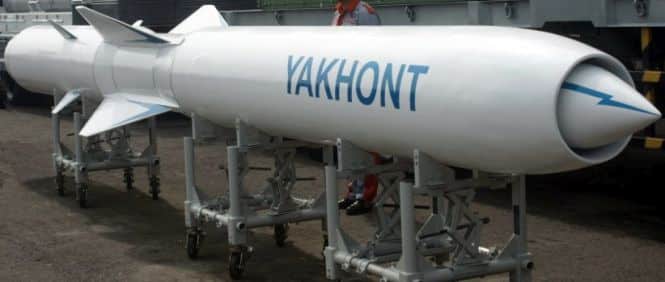

P-800 Oniks/Yakhont/Bastion (SS-N-26 Strobile)
The SS-N-26 “Strobile” (P-800 Oniks)/Yakhont/Yakhont-M are Russian anti-ship cruise missiles developed by NPO Mashinostroyenia. There are three known variants of the missile. The ship-launched variant is known as the P-800 Oniks and has been designated the SS-N-26 “Strobile” by NATO. The export variant of the ground-launched version is known as the Yakhont. An air-launched variant...
R-29 Vysota (SS-N-18)
The R-29 Vysota (NATO: SS-N-18 “Stingray”) is an intercontinental-range, submarine-launched, liquid-propellant ballistic missile. It likely derives from the SS-N-8 (R-29) missile. The SS-N-18 was designed for the Delta III ballistic missile submarine (SSBN), or Kalmar class. Each Kalmar carries sixteen SS-N-18 missiles. SS-N-18 Development There have been three SS-N-18 variants. Mod 1 has a range...
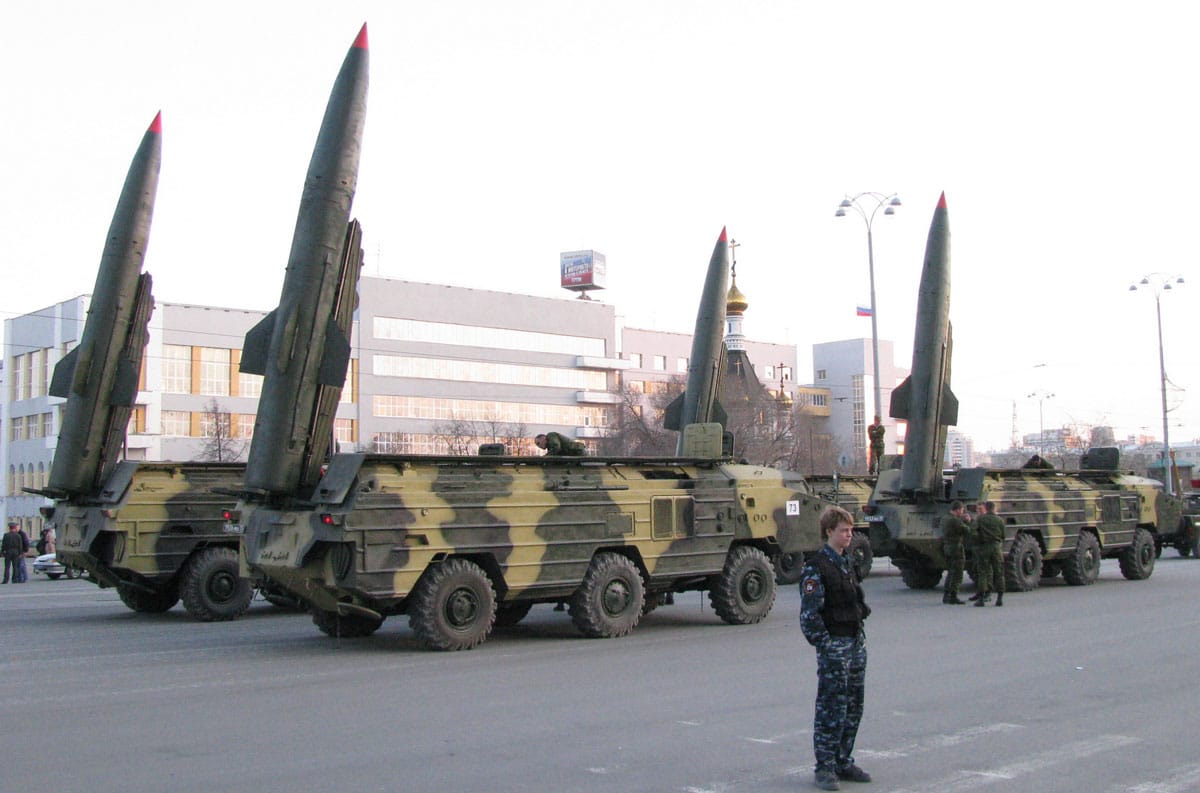
OTR-21 Tochka (SS-21)
The OTR-21 Tochka (NATO: SS-21 “Scarab”) is a short-range, road-mobile, solid propellant, single warhead ballistic missile designed for battlefield deployment. It was designed as a replacement for the Free Rocket Over Ground (FROG) missile series. Reports suggest that it can be launched in either a ballistic or cruise missile mode. The ballistic mode provides an...
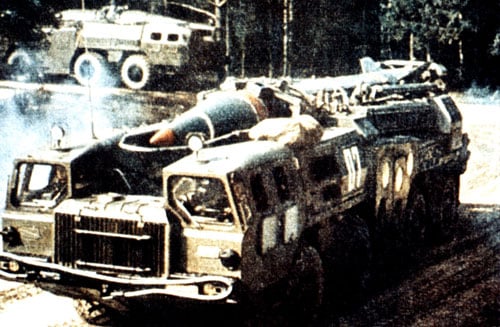
SS-1 “Scud”
The SS-1 “Scud A” was designed a short time after the end of World War II by captured German scientists and is based upon the Nazi V-2 rocket which was used to attack London during the Second World War. The Scud family of short-range, liquid-fueled missiles has now proliferated around the world and serves as...
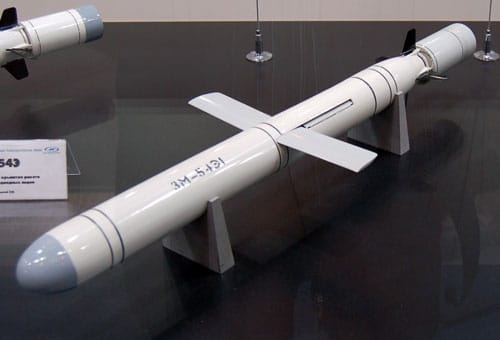
3M-54 Kalibr/Club (SS-N-27)
The 3M-54 Kalibr/Klub (SS-N-27 “Sizzler”) is a Russian short-range ship-, and submarine-launched anti-ship missile. The Sizzler is part of the Kalibr family of missiles and has several export versions known as the ‘Klub’ missile series. SS-N-27 Development Along with the rest of the Klub and Kalibr family of missiles, this anti-ship cruise missile began development...
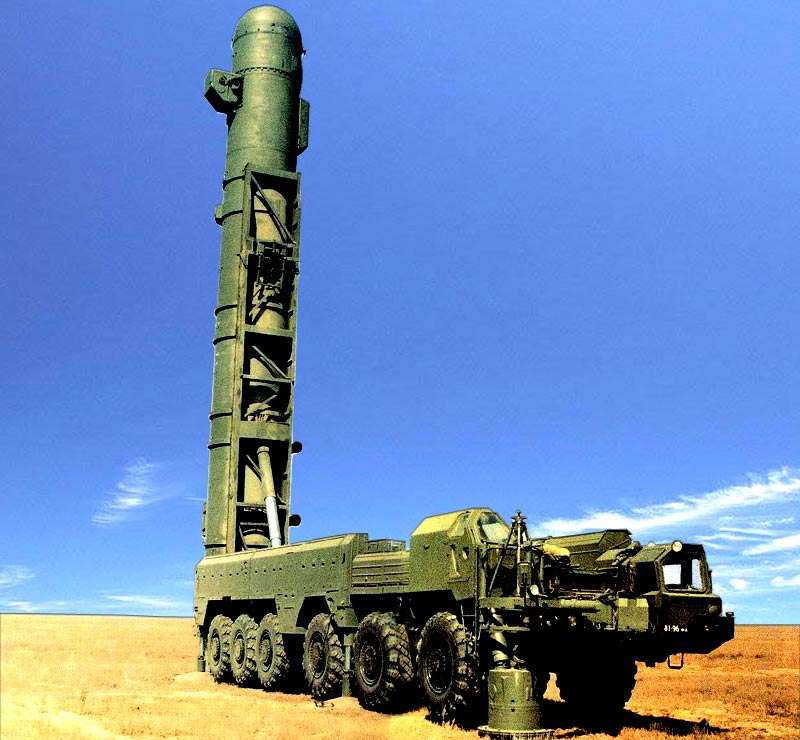
RSD-10 Pioneer (SS-20)
The RSD-10 Pioneer (NATO: SS-20 “Saber”) was a Soviet intermediate-range ballistic missile (IRBM) that entered service in 1976. Its wide-scale deployment was a key driver behind NATO’s 1979 decision to station U.S. Pershing II IRBMs in Europe. The Soviet Union retired the SS-20 from service following the ratification of the Intermediate-Range Nuclear Forces (INF) Treaty...
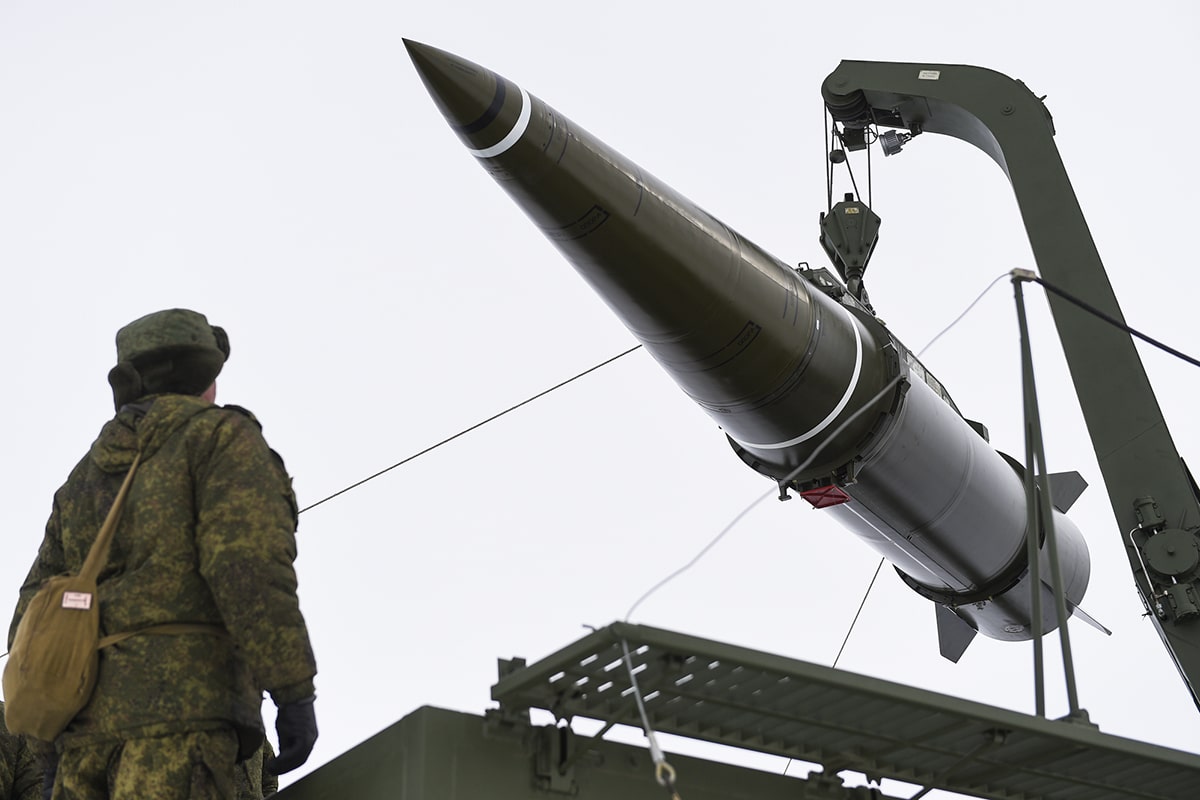
9K720 Iskander (SS-26)
The 9K720 Iskander (NATO: SS-26 “Stone”) is a road-mobile short-range ballistic missile (SRBM) with a range of up to 500 km. Using a common transporter-erector-launcher (TEL) and support vehicles, the system can also fire the 9M728 (R-500, SSC-7) and 9M729 (SSC-8) cruise missiles. Iskander Development Russia began development of the SS-26 in the late 1980s...
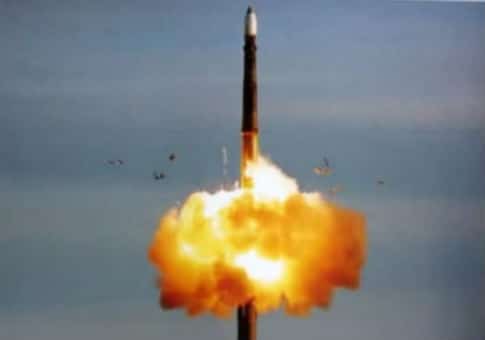
RS-26 Rubezh
The RS-26 Rubezh is a Russian solid-fueled, road-mobile intercontinental ballistic missile (ICBM) currently in development. Although classified as an ICBM under the New START Treaty, the RS-26 has been tested with heavier payloads at ranges below 5,500 km, potentially putting Russia in violation of the Intermediate-Range Nuclear Forces (INF) Treaty. RS-26 Development Development of the...
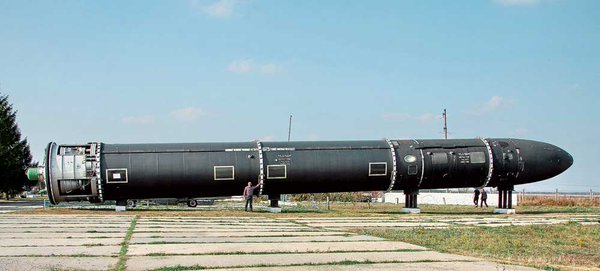
RS-28 Sarmat
The RS-28 Sarmat is a liquid-fueled intercontinental ballistic missile currently under development by Russia. Sarmat Development Designed to replace Russia’s aging SS-18 Satan ICBM, the RS-28 Sarmat began development some time in the 2000s. After awarding production contracts to Makeyev Design Bureau and NPOMash in early 2011, Russia concluded research and development of the Sarmat...
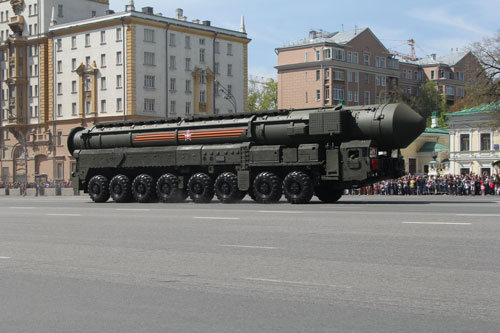
RS-24 Yars (SS-27 Mod 2)
The RS-24 Yars (NATO: SS-27 Mod 2) is a three-stage solid fuel missile that reportedly carries a payload of three reentry vehicles (RV) and penetration aids. RS-24 Yars Development The RS-24 Yars is believed to have entered into service in February 2010. While details about the missiles specifications and capabilities are limited, it is reported to...
RT-2PM2 Topol-M (SS-27 Mod 1 “Sickle B”)
The RT-2PM2 “Topol-M” (NATO designation: SS-27 “Sickle B”), is a Russian solid-fueled intercontinental ballistic missile with a range of 11,000 km. Topol-M Development The development of the Topol-M, began in the late 1980s as an upgraded version of the SS-25, though it was redesigned in 1992 as the first missile designed and built by the...
RT-2PM Topol (SS-25)
The RT-2PM Topol (SS-25 “Sickle”) is an intercontinental-range, road-mobile, solid propellant ballistic missile system. It has a range of over 11,000 km and was based on the preceding Temp-2S and Pioneer road-mobile missiles. SS-25 Development The SS-25 entered development in 1977, with flight tests occurring in between 1983-87. The missile was officially commissioned into service...
UR-100 (SS-19)
The UR-100 (NATO: SS-19 “Stiletto”) s an intercontinental-range, silo-based, liquid propellant ballistic missile system deployed by the Soviet Union and now the Russian Federation. Designed concurrently with the SS-17, with which it shares many features. SS-17, SS-18, and SS-19 were the first Soviet missiles to be equipped with Multiple Independent Reentry Vehicle (MIRV) warheads with...
R-36 (SS-18 “Satan”)
The The R-36 (NATO: SS-18 “Satan”) is an intercontinental-range, silo-based, liquid propellant ballistic missile initially developed by the Soviet Union and now the Russian Federation. It is believed that a total of six versions have existed since the program’s inception, with only the Mod 6’s still operationally deployed. SS-18 Development The SS-18 (original Mods 1/2/3)...

Kh-101 / Kh-102
The Kh-101 / Kh-102 is a line of conventional and nuclear capable air-launched cruise missiles (ALCM) developed and deployed by Russia. A stealthy missile, the Kh-101/-102 is designed to defeat air defense systems by flying at low, terrain-hugging altitudes to avoid radar systems. The Kh-101 carries a conventional warhead, while the Kh-102 is believed to...
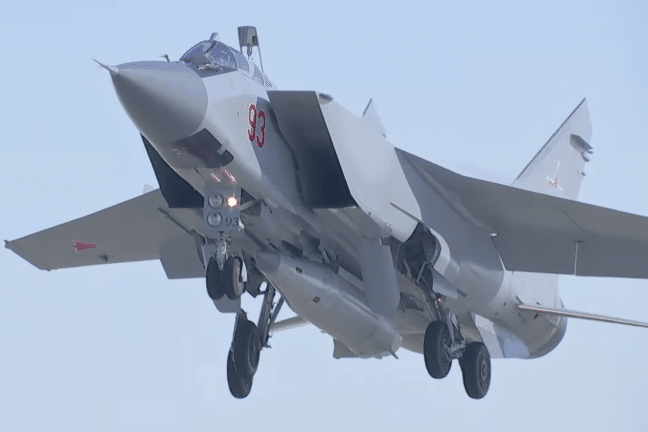
Kh-47M2 Kinzhal
The Kh-47M2 Kinzhal is a nuclear-capable, Russian air-launched ballistic missile, likely derived from Russia’s ground-launched 9K720 Iskander-M. It was one of six “next generation” weapons unveiled by President Putin during a speech in March 2018. Kinzhal Development Although it is unclear when Kinzhal’s development began, concept schemes of Russian Iskander missiles installed on the MiG-31...
Missiles of Russia
As the heir to the substantial Soviet missile arsenal, Russia boasts the widest inventory of ballistic and cruise missiles in the world. Russia remains a major power in the development of missiles of all kinds, and Russian strategic rocket forces constitute a significant element of Moscow’s military strategy. Russian missiles perform a wide variety of...
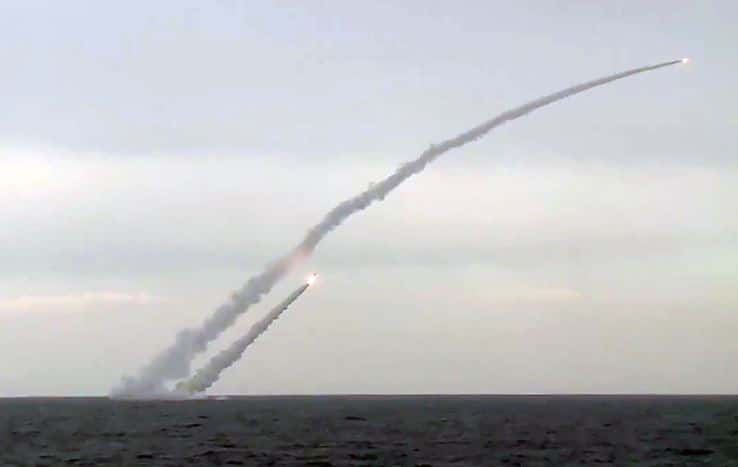
9M729 (SSC-8)
The SSC-8 is a Russian ground-launched cruise missile (GLCM) with a range of 2,500 km. Its development prompted the 2019 U.S. withdrawal from the 1987 INF Treaty. SSC-8 Development Russia reportedly began covert development of the SSC-8 in the mid-2000s, and started flight testing in 2008. It was first test fired in July 2014. It...

The Avangard is a nuclear-capable, hypersonic boost-glide vehicle developed by the Russian Federation. It was one of six “next generation” weapons described by Russian President Vladimir Putin during a speech in March 2018. Avangard Development The origins of the Avangard hypersonic glide vehicle (HGV) reach back to the mid-1980s, at which time the USSR first started...
- International

Israel wages war on Hamas

School shooter parents sentencing
June 13, 2023 Russia-Ukraine news
By Kathleen Magramo , Rob Picheta , Schams Elwazer, Aditi Sangal , Mike Hayes and Elise Hammond , CNN
Russia launched 14 cruise missiles at Ukraine overnight, Ukrainian military says
From CNN's Olga Voitovych in Kyiv
Ukrainian air defenses shot down 10 of 14 cruise missiles fired by Russia in deadly strikes overnight, the General Staff of the Armed Forces of Ukraine said Tuesday.
Air defenses also intercepted one of four Iran-made Shahed drones launched by Russia, officials said.
In the central city of Kryvyi Rih, at least six people were killed, dozens were wounded and rescue teams were working to free people still trapped under the rubble.
“One apartment building, a warehouse with food. [...] We are currently dismantling the rubble and extinguishing the fire. Many people lost their apartments. We are now engaged in resettlement,” said Oleksandr Vilkul, head of the Kryvyi Rih city military administration, on Telegram.
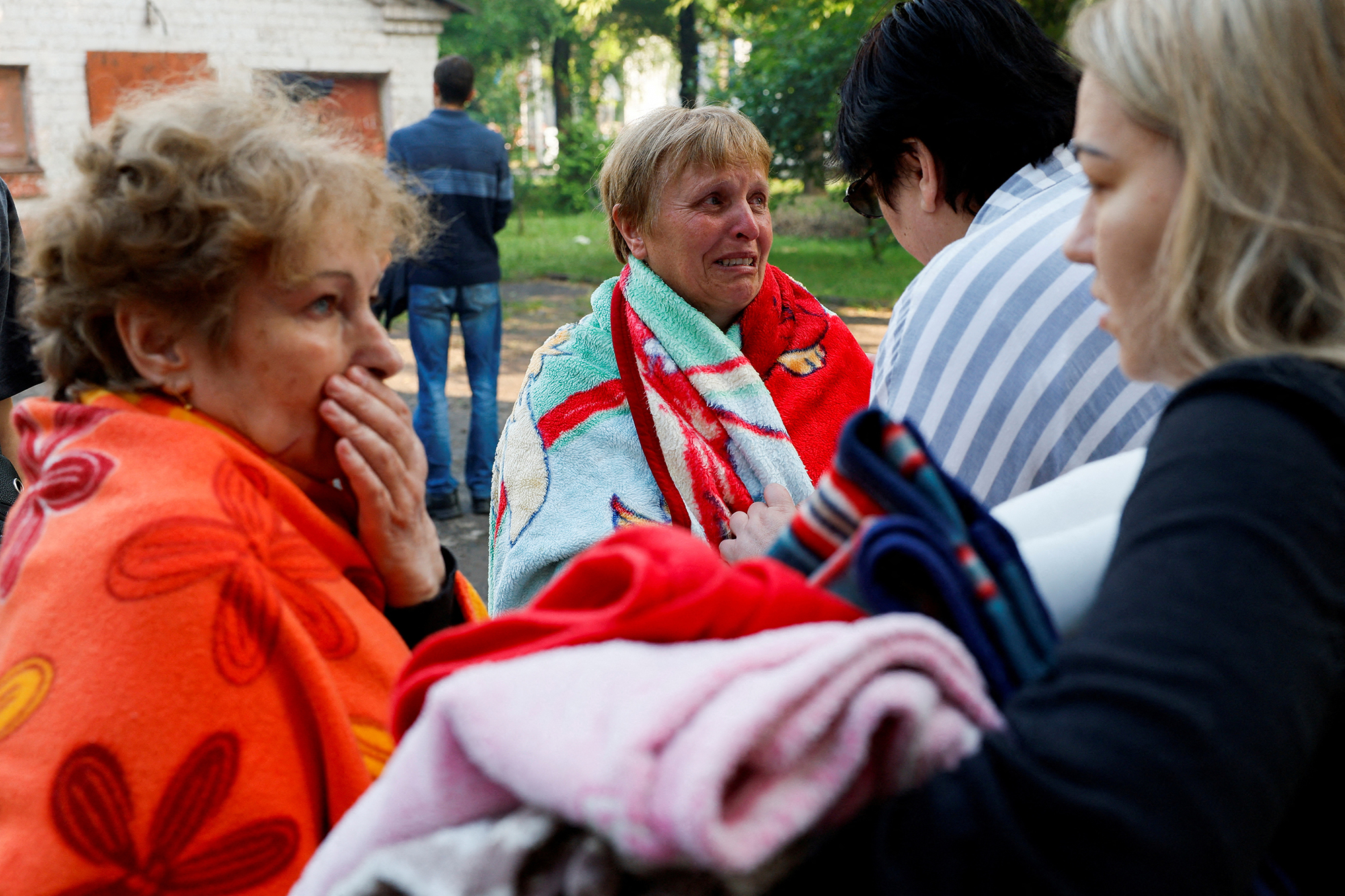
More Russian attacks: Elsewhere, Russian shelling hit Ukraine's northeastern Sumy and Kharkiv regions, the Armed Forces of Ukraine said in a statement.
In the southern Zaporizhzhia region, three bombs hit the town of Orikhiv, killing one civilian and destroying homes, it added.
Russian military bloggers claimed Monday that Ukrainian efforts to advance south of Orikhiv have been resisted and geolocated video appears to show Ukrainian armor losses in this area.
Death toll rises to 6 after Russian strikes on Kryvyi Rih, official says
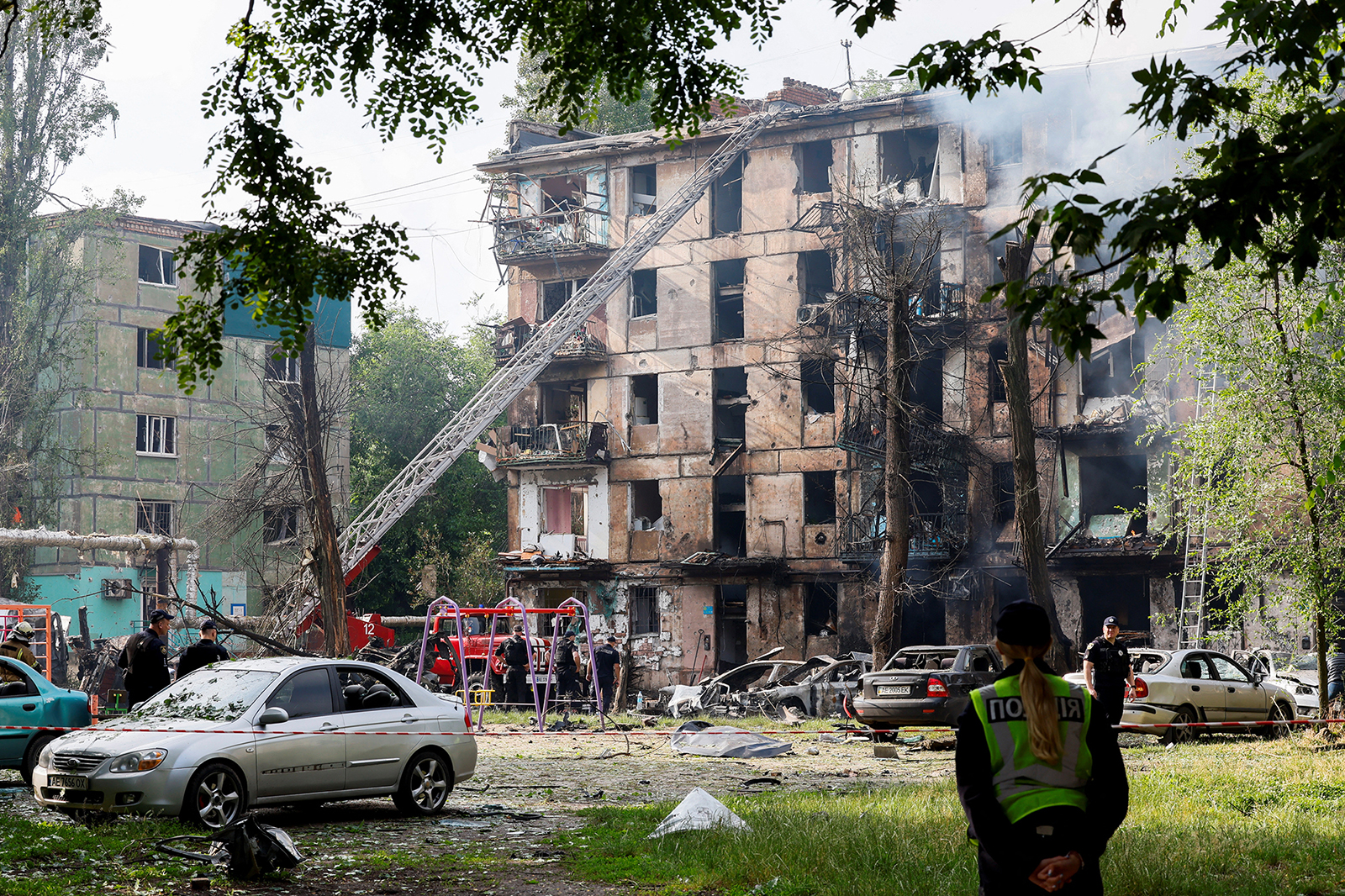
At least six people have now been confirmed dead after Russian missile strikes hit the city of Kryvyi Rih in central Ukraine overnight, as rescue teams work to free people still trapped under the rubble, Ukrainian officials said.
Vilkul said earlier that at least three people had died, dozens of others were wounded and rescuers were working to free at least seven people trapped in the rubble.
Their exact location remains unclear; rescue operations were taking place at a five-story apartment building that caught fire and at a warehouse hit in the strikes, authorities said.
"Three of the victims work at a private enterprise. They were hospitalized. There are probably people under the rubble of the destroyed warehouse, and rescuers are looking for them," Serhii Lysak, head of the Dnipropetrovsk region military administration, said in a Telegram post earlier Tuesday.
Air defenses shot down three cruise missiles over the city but there were also “incomings,” that hit civilian infrastructure, Lysak said earlier.
Ukrainian President Volodymyr Zelensky has condemned the attacks and offered condolences to the victims.
At least 3 dead, 25 wounded in Russian missile attacks on Kryvyi Rih
From CNN's Olga Voitovych in Kyiv, Ukraine and Josh Pennington

At least three people were killed and 25 others wounded after Russian missile attacks on central Ukraine's Kryvyi Rih early Tuesday, according to Ukrainian officials.
Serhii Lysak, head of the Dnipropetrovsk region military administration, said on Telegram that air defenses shot down three cruise missiles over the city but there were also "incomings."
"Civilian facilities were damaged," he said, adding that 19 of the wounded were hospitalized.
"There was a massive missile attack on Kryvyi Rih. The Russians carried out another terrorist attack on the residential sector — overnight. This was insidious. Cruel," Lysak said earlier on Telegram.
Mayor Oleksandr Vilkul said earlier that a five-story apartment building was hit and victims were likely trapped under the rubble.
"Apartments from the first to the fifth floors are on fire. The fire has covered 700 square meters. Rescuers are extinguishing it," the mayor said in an update.
Four people were also injured at another location in the city where a building and a car had caught fire, he added.
The mayor also reported Russian shelling of the nearby Nikopol district overnight.
Zelensky on attacks: In a Telegram post, Ukrainian President Volodymyr Zelensky offered his condolences to the victims.
"More terrorist missiles, Russian killers continue their war against residential buildings, ordinary cities, and people," he said. "Unfortunately, there are dead and wounded. The rescue operation in Kryvyi Rih continues. My condolences to all those who have lost their loved ones! Terrorists will never be forgiven, and they will be held accountable for every missile they launch."
Russian missiles target Ukraine as intense fighting rages on the battlefield. Here's the latest
From CNN staff

Russian strikes hit Ukraine's Kryvyi Rih early Tuesday, leaving victims in "extremely critical condition," the mayor said. Meanwhile, Kyiv's air defenses shot down all Russian missiles launched at the capital, officials said.
The latest Russian airstrikes come after both Russian and Ukrainian forces reported intense clashes on the battlefield Monday. Ukrainian forces have recaptured seven villages within the last week, according to��Deputy Defense Minister Hanna Maliar.
Here are the latest developments in the war:
- Heavy fighting: Russia-backed officials and military bloggers are reporting intense fighting along the border of the Donetsk and Zaporizhzhia regions , in an area where Ukrainian forces have made gains in recent days . The fighting is taking place south of the town of Velyka Novosilka along both sides of the Mokri Yaly River, an area where the Ukrainians appear to have had greater success than elsewhere in the initial stages of their counteroffensive. Several Russian accounts have admitted Kyiv's forces were making some gains.
- Zelensky on gains: In his nightly address Monday, Ukrainian President Volodymyr Zelensky said the fighting in the Donetsk-Zaporizhzhia border region is tough but Ukrainian forces are recapturing territory. "The battles are fierce, but we are moving forward, and this is very important. The enemy's losses are exactly what we need," he said.
- Elsewhere in Donetsk: Ukrainian troops have made incremental gains in the eastern city of Bakhmut, according to the army and Maliar. The deputy defense minister said Monday that within the past week, Ukrainian forces in the Bakhmut area had recaptured 16 square kilometers .
- "Ultimate goal": Zelensky's chief diplomatic adviser told CNN Monday that the "ultimate goal of the counteroffensive campaign is to win back all the territories, including Crimea." Adviser Igor Zhovkva would not give details on the actions underway and sought to tamp down any expectations that the counteroffensive would achieve rapid results.
- Putin visits wounded soldiers: Russia's Vladimir Putin told wounded soldiers their country needs them during a visit to the central Ministry of Defense Hospital in Moscow on Monday — one of several public appearances by the president to mark Russia Day. He bestowed state awards on fighters wounded in Ukraine and said he understood the conflict is "not some movie, it's all happening in reality."
- Dam "catastrophe": The collapse of the Nova Kakhovka dam in southern Ukraine last week was the "largest catastrophe by Russian invaders" since the war began, Ukraine’s environment minister told CNN on Monday. "The Russian act of terrorism has catastrophic consequences for the environment, not only in Ukraine but also in the entire region," minister Ruslan Strilets said. Kyiv and Moscow have blamed each another for the breach, although it is unclear whether the collapse resulted from structural failure or a deliberate attack.
Kyiv's air defenses shoot down Russian cruise missiles, Ukrainian military says
From CNN’s Josh Pennington and Eyad Kourdi
Ukraine's air defenses shot down all missiles launched by Russia at Kyiv early Tuesday, according to initial reports cited by a senior Ukrainian military official.
Serhiy Popko, head of the Kyiv city military administration, said Russia launched an unspecified number of X-101/555 cruise missiles at Ukraine's capital from Tu-95MS strategic bombers over the Caspian Sea.
No casualties or damage have yet been reported following the attack, he added.
Earlier Tuesday, the administration warned residents in the Kyiv region to take immediate precautions due to missile danger.
Civilians in "critical condition" after strike on Ukraine's Kryvyi Rih, mayor says
From CNN’s Josh Pennington
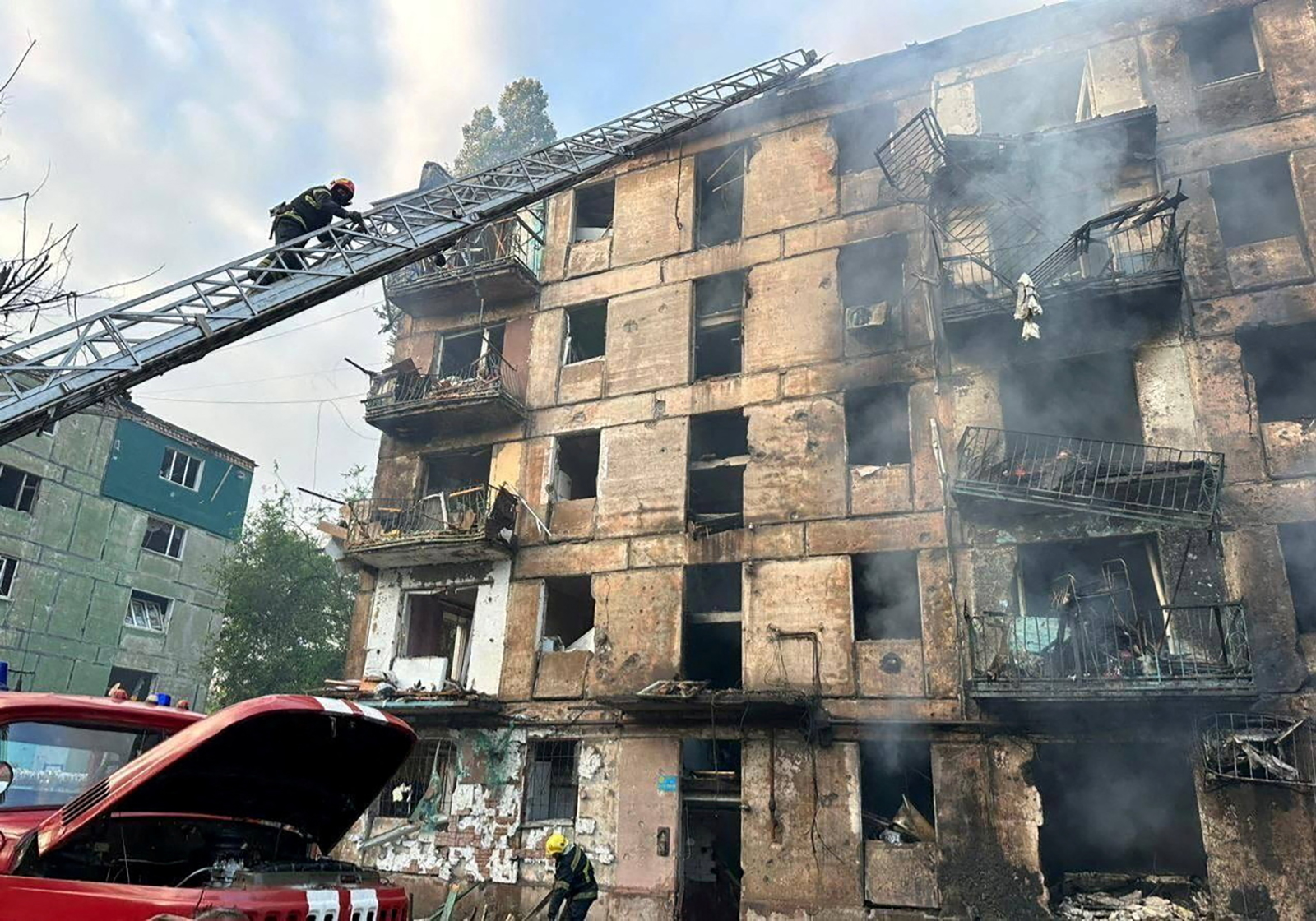
"High precision" Russian strikes hit central Ukraine's Kryvyi Rih early Tuesday, leaving civilian victims in “extremely critical condition,” the city's mayor said.
Mayor Oleksandr Vilkul said on Telegram that "high-precision monsters" struck several civilian targets in various parts of the city, including a five-story residential building.
Some victims were likely still under the rubble, he said, adding that response teams were working at the scene.
Russian accounts report heavy fighting in Zaporizhzhia and acknowledge Ukrainian gains
From CNN's Tim Lister, Josh Pennington and Maria Kostenko
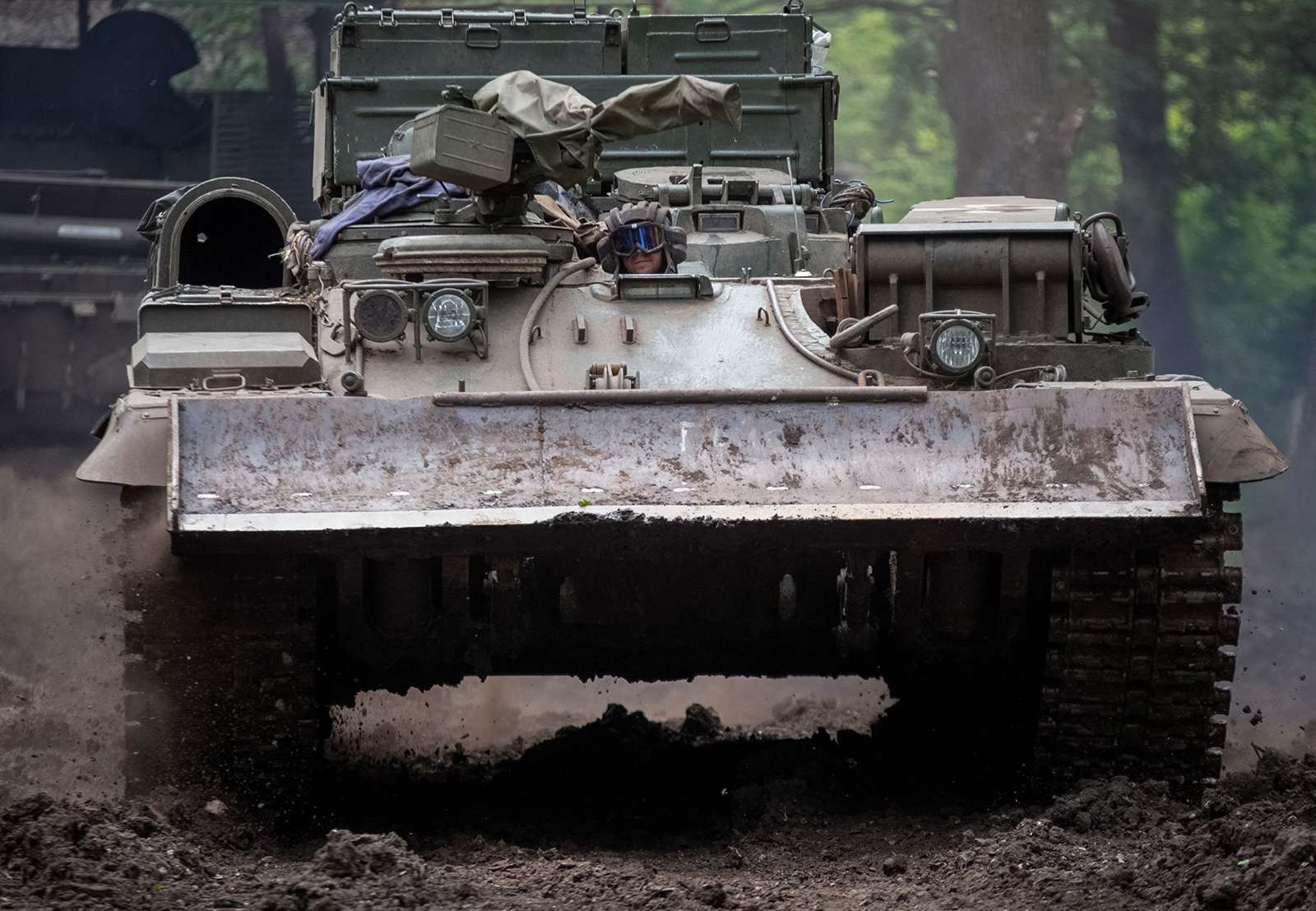
Russia-backed officials and military bloggers are reporting intense fighting along the border of the Donetsk and Zaporizhzhia regions , in an area where Ukrainian forces have made gains in recent days .
The fighting is taking place south of the town of Velyka Novosilka along both sides of the Mokri Yaly river, an area where the Ukrainians appear to have had greater success than elsewhere in the initial stages of their counteroffensive.
Late Monday, a senior Moscow-appointed official, Vladimir Rogov, spoke of heavy fighting in an area known as the Vremivka ridge, claiming that higher ground remained under Russian control.
Rogov, a member of the Russian-installed Zaporizhzhia administration, said on Telegram that Russian attack helicopters were in action, and that "reciprocal shelling and heavy fighting of ultra-high intensity continues" in the vicinity of the village of Urozhaine.
Rogov conceded that Ukrainian forces were "holding their positions on the northern and eastern outskirts of the village."
He also claimed that in the nearby village of Makarivka, "the enemy has already been driven out by the quick and effective counterattack of the 127th Division," although other accounts paint a gloomier picture for Russian forces around Makarivka.
Rogov said heavy fighting about 10 kilometers to the west had turned the area into a "gray zone," but that Ukrainian units had dispersed from the area — around the village of Levadne.
Bloggers' reports: Russian military bloggers have also been reporting intense combat in the area, with one Telegram channel (Our Donetsk) saying "the enemy managed to deepen and advance through the wooded areas, threatening with further advance to encircle" nearby Russian units.
There is no way to verify these unofficial reports, but they are consistent with a pattern in the fighting that has evolved in the last week.
"Our Donetsk" acknowledged that Russian troops had been forced to abandon Neskuchne — just south of Velyka Novosilka — for a second time, "retreating to positions where they would not be encircled."
It said the Ukrainians were "accumulating forces" in the area, and heavy fighting continued.
Also late on Monday, Ukrainian President Volodymyr Zelensky commented on the fighting in the Donetsk and Zaporizhzhia border region, saying "the enemy's losses are exactly what we need."
By contrast, Russian military bloggers are claiming that Ukrainian efforts to advance south of Orikhiv, in another part of the southern front, have been resisted, with several saying the Ukrainians had lost a significant number of de-mining tanks in an area known to have been heavily fortified by the Russians with minefields and tank traps.
Geolocated video appears to show Ukrainian armor losses in this area.
Zelensky says battles are fierce but Ukraine is moving forward and recapturing territory
From CNN's Maria Kostenko
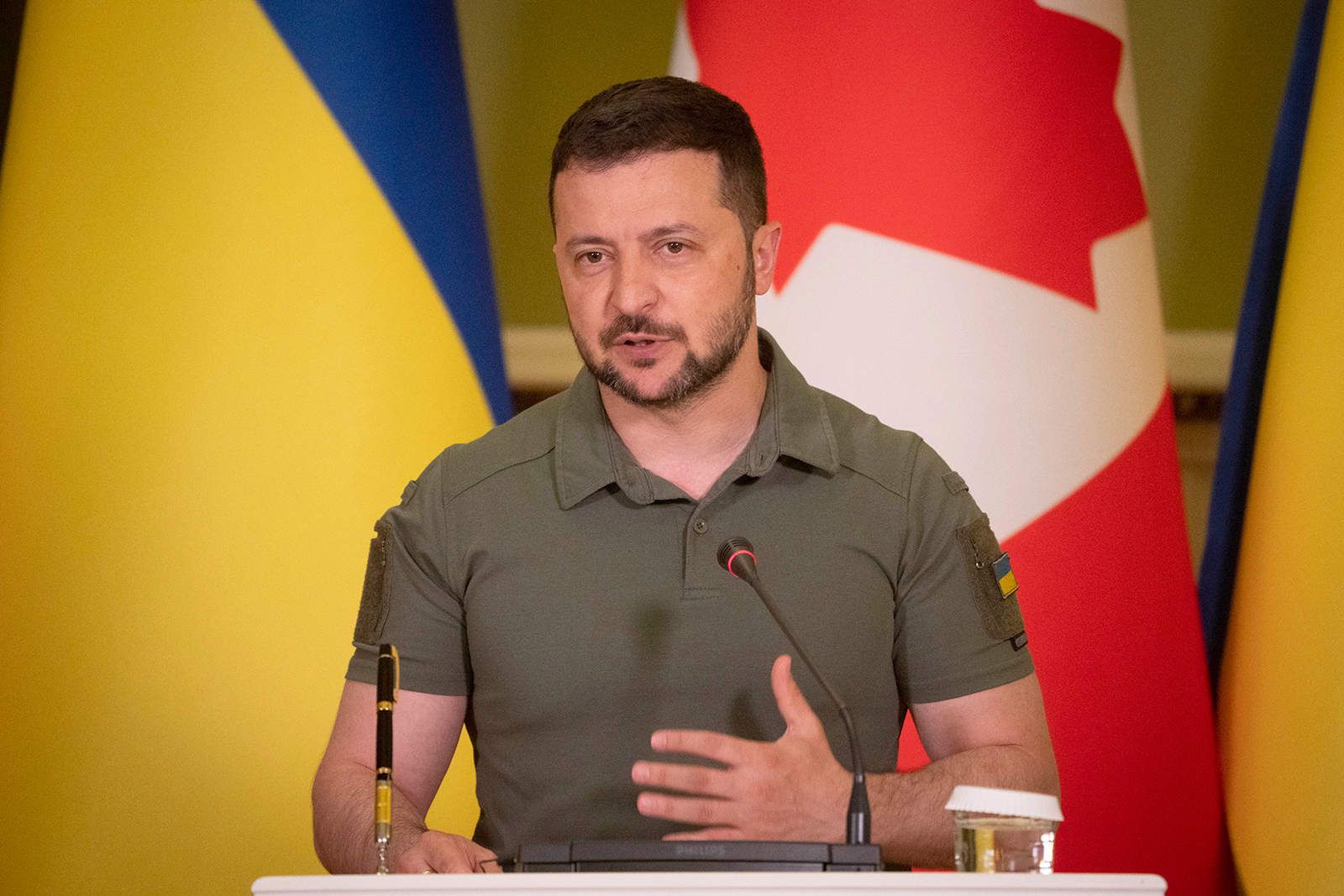
Ukrainian President Volodymyr Zelensky said in his nightly address on Monday that fighting is tough but Ukrainian forces are "moving forward" and recapturing territory.
"The battles are fierce, but we are moving forward, and this is very important. The enemy's losses are exactly what we need," Zelensky said. "Although the weather is unfavorable these days — the rains make our task more difficult — the strength of our warriors still yields results, and I thank everyone who is in combat now, everyone who supports our combat brigades in the relevant areas."
Zelensky also said "the most important and hottest" operational areas are in the Tavria and the Khortytsia directions in southern Ukraine, and he received reports from the commanders in those areas during his staff meeting on Monday.
The commander of the Ukrainian Ground Forces and the general of the Tavria operational-strategic group reported "on the success we have achieved, on the front areas where we need to reinforce and on the actions we can take to break more Russian positions," Zelensky said.
"We are maintaining and strengthening our operational dominance," Zelensky said. "I am particularly grateful for Bakhmut as we are increasing our control in this area."
Some more context: Earlier on Monday, Ukraine's Deputy Defence Minister Hanna Maliar said that within the past week, Ukrainian forces in the Bakhmut area recaptured 16 square kilometers . On the left flank in Bakhmut, Ukrainian troops advanced 1.5 kilometers, and on the right flank, they advanced 3.5 kilometers, according to Maliar.
"This week, as always, will be very meaningful," Zelensky added in his address. "First, we are preparing new weapons support from our partners for our warriors. Second, we are preparing to involve more global actors in the implementation of the Peace Formula. Third, we are working to make the [NATO] Vilnius Summit truly meaningful."
Ultimate goal of counteroffensive is to win back all territories, including Crimea, presidential adviser says
From CNN’s Sharon Braithwaite in London and Andrew Carey in Kyiv
Ukraine's "ultimate goal of the counteroffensive campaign is to win back all the territories, including Crimea," the chief diplomatic adviser to President Volodomyr Zelensky said Monday.
During an interview with CNN's Christiane Amanpour, adviser Igor Zhovkva said some counteroffensive actions were underway, but would not give details.
He also sought to tamp down any expectations the campaign would achieve rapid results, saying it could take many months for Ukraine to achieve its aims.
In the same vein, he reminded Amanpour this was not Ukraine’s first counteroffensive — a reference to the Ukrainian army's successful advances in September and October when Russian forces were pushed out of the Kharkiv region and the northern part of the Kherson region.
The current push would “probably would not be the last counteroffensive operation,” he said.
He also said that if Ukraine was going to be successful it needed Western partners to supply more artillery and ammunition.
Please enable JavaScript for a better experience.
2 dead as Russia launches attacks on Ukraine's energy infrastructure
A Russian cruise missile struck infrastructure in Ukraine’s western Lviv region.
KYIV, Ukraine -- A Russian cruise missile strike on infrastructure in Ukraine ’s western Lviv region killed one man, while another died in an attack in the northeast, officials said Sunday.
The attack in Lviv destroyed a building and sparked a fire, Gov. Maksym Kozytskyi wrote on social media app Telegram. He said that rescue operations were being conducted.
In the Kharkiv region, Gov. Oleh Syniehubov said that an air attack killed an 19-year-old man after a missile hit a gas station.
Meanwhile, hundreds of thousands in Ukraine’s Odesa region were left without power Sunday after debris from a downed Russian drone caused a blaze at an energy facility, Gov. Oleh Kiper said. Some 170,000 homes suffered power outages as a result of the attack, said Ukraine’s largest private electricity operator, DTEK.
The Ukrainian air force said that it shot down nine of the 11 Shahed-type drones launched by Russia overnight, as well as nine out of 14 cruise missiles.
Russia has escalated its attacks on Ukrainian energy infrastructure in recent days, causing significant damage in several regions.
Ukrainian energy company Centrenergo announced Saturday that the Zmiiv Thermal Power Plant, one of the largest in the northeastern Kharkiv region, was completely destroyed following Russian shelling last week. Power outage schedules were still in place for around 120,000 people in the region, where 700,000 had lost electricity after the plant was hit on March 22.
In a message Sunday to mark the date when some of Ukraine’s Christians celebrate Easter, President Volodymyr Zelenskyy urged the country to persevere.
“There is not a day or night right now when Russian terror does not try to shatter our lives. Last night, we once again saw rockets and Shaheds launched against our people,” he said.
“We defend ourselves, we persevere; our spirit does not give up and knows that death can be averted. Life can win,” Zelenskyy said.
Ukraine’s Catholic, Protestant, and Greek Orthodox Christians celebrate Easter Sunday according to the Gregorian calendar. The country’s religious majority, Orthodox Christians, follow the Julian calendar, which in 2024 places Easter on May 5.
Many of Ukraine’s Orthodox Christians began marking Christmas in line with the Gregorian calendar on Dec. 25 in 2023, in a move adopted by some of the country’s churches to distance themselves from Russia. However, the dates for Easter and other religious holidays have so far remained unchanged.
Zelenskyy, alongside Prime Minister Denys Shmyhal and several ambassadors, spent the day in the town of Bucha in the Kyiv region, commemorating the second anniversary of the area's liberation from Russian forces.
Bucha’s name has come to evoke savagery by Moscow’s military since its full-scale invasion of Ukraine began in February 2022. Ukrainian troops who retook the town on March 31, 2022, found the bodies of men, women and children on the streets, in yards and homes, and in mass graves. Some showed signs of torture.
The Ukrainian leader laid a lamp at the town's Wall of Remembrance, the president's website said. The monument names the 509 civilians who have so far been identified of those killed during the occupation.
In Russia, meanwhile, 10 Czech-made Vampire rockets landed in the region of Belgorod on Sunday, the Ministry of Defense said. One woman was injured when a fire broke out following the attack, said regional Gov. Vyacheslav Gladkov. Another woman was killed as shelling hit villages along the Russian border.
Russian President Vladimir Putin has signed orders heralding the start of the country's annual spring recruitment season, officially drafting 150,000 conscripts.
Russia's parliament raised the upper age limit for conscripts from 27 to 30 in July 2023 in a move that appeared to be part of efforts to expand the country's military during the fighting in Ukraine. All Russian men are obliged to complete the yearlong national service, although many avoid the draft by using deferments granted to students, people with chronic illnesses and others.
Follow AP’s coverage of the war in Ukraine at https://apnews.com/hub/russia-ukraine
Related Topics
Top stories.

Parents of Michigan school shooter receive historic sentences of 10 to 15 years
- Apr 9, 1:13 PM

Ex-Trump Organization CFO Allen Weisselberg faces perjury sentencing
- Apr 9, 1:41 PM

Gunmen kill 6 policemen in an ambush in southeastern Iran, media reports say
- Apr 9, 10:58 AM

More than half of foreign-born people in US live in just 4 states and half are naturalized citizens
- Apr 9, 3:42 PM

Foreign terrorists targeting US 'increasingly concerning': FBI director
- Apr 9, 4:59 PM
ABC News Live
24/7 coverage of breaking news and live events
- International edition
- Australia edition
- Europe edition
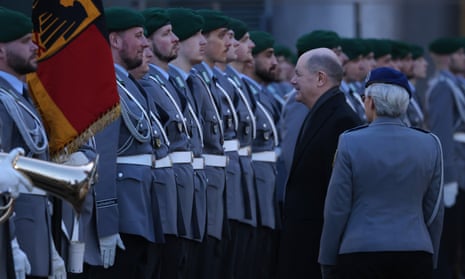
Send missiles to Ukraine or stand accused of appeasing Russia? Olaf Scholz must choose

The SPD chancellor has drawn a line in the sand. But playing the peace card to win back anti-war voters could cast his party into the political wilderness
A Social Democratic German chancellor lagging in the opinion polls vows adamantly not to join a war. Support for his SPD party rallies and he narrowly clings to power.
By refusing to supply Taurus long-range cruise missiles to Ukraine despite an outcry among western allies, Olaf Scholz may be hoping that history will repeat itself and he can replicate Gerhard Schröder’s 2002 stunt before the US-led invasion of Iraq when he refused to provide troops or money.
With Scholz’s popularity at a record low, the economy likely in recession and his three-party coalition lurching from one crisis to the next, the chancellor appears to be trying to rally voters behind his rejection of calls from Kyiv, Paris and London to deliver the potentially game-changing weapons to the embattled Ukrainians.
The SPD has proclaimed itself the “peace party” ever since the original Friedenskanzler (peace chancellor), Willy Brandt, knelt at the Warsaw Ghetto Uprising memorial in 1970 to atone for the Holocaust and Nazi Germany’s rape of Poland. It was Brandt who launched Ostpolitik – the pursuit of east-west reconciliation through diplomacy and trade – which remains the SPD’s proudest foreign policy accomplishment, for which many members are nostalgic today.
The party has always had a strong pacifist streak, reflecting Germans’ angst about a return to war. After the second world war, the SPD initially advocated a neutral, reunified and demilitarised Germany, only embracing Nato membership in 1959. Recent opinion surveys show that more than half of Germans fear that Russia’s war in Ukraine will spread to Nato countries and draw in Germany. Such fears can only have been exacerbated by images of carnage from last month’s terror attack on a Moscow concert hall, and President Putin’s attempts to link Ukraine to the Islamic State gunmen who carried out the slaughter.
Languishing at around 15% in the polls ahead of the 9 June European Parliament elections, the Social Democrats are tempted to play the peace card one more time, even though it was Scholz who declared a Zeitenwende (turning point) in German foreign and defence policy after Putin’s full-scale invasion of Ukraine two years ago. He scrapped the Nord Stream 2 gas pipeline from Russia to Germany, announced a €100bn (£85bn) special fund to bolster the country’s rusting armed forces and, after lengthy hesitation, began sending weapons to Kyiv.
Now, the dour chancellor alternates between boasting that Berlin is Ukraine’s biggest European arms provider, with €17.1bn in military assistance since the war began, and rejecting pleas from within his own coalition, the conservative opposition, western allies and from the Ukrainian president, Volodymyr Zelenskiy, to supply Taurus missiles.
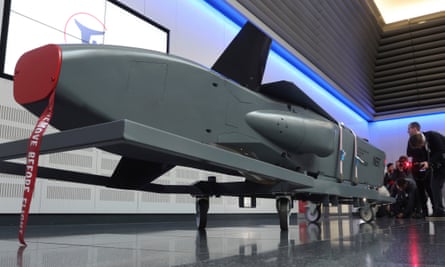
His public justification is that it would require German soldiers in Ukraine to help operate and target the missiles, bringing Berlin closer to war with Moscow. But when the UK’s foreign secretary, David Cameron, proposed a way around that obstacle, saying that the UK could send more of its own Storm Shadow missiles to Ukraine if Germany gave London the Taurus, Scholz rejected the idea , declaring: “I am the chancellor, so that’s it.”
Scholz also rebuffed French president Emmanuel Macron’s statement that sending ground troops to Ukraine could not be ruled out if the situation deteriorated, declaring flatly that “there will be no ground troops, no soldiers on Ukrainian soil sent there by European countries or Nato states.”
Scholz’s party comrades have gone further, musing aloud about a ceasefire that would leave Russia in control of the swathes of eastern and southern Ukraine that it has seized since 2022. Rolf Mützenich, parliamentary leader of the SPD, asked this month : “Isn’t it time that we not only talk about how to wage war, but also think about how we can freeze the war and later end it?”
Coalition lawmaker Marie-Agnes Strack-Zimmermann of the liberal Free Democrats, and chair of the parliamentary defence committee, branded his speech a scandalous example of “SPD appeasement policy”.
Even inside the SPD, some prominent intellectuals have begun to criticise Scholz’s line . A group of five Social Democratic historians, led by Prof Heinrich August Winkler of Berlin’s Humboldt University, said in an open letter to party leaders that the SPD had failed to hold an honest reckoning with the errors of German policy towards Russia over past decades. They accused them of using “arbitrary, erratic and not infrequently factually false arguments” to justify restricting arms deliveries to Kyiv. And former European affairs minister Michael Roth announced he was quitting politics partly because he no longer felt comfortable with the SPD’s policy on Ukraine.
The Social Democrats are struggling to win back lost working-class and young voters who now support either the far-right Alternative for Germany (AfD) or the newly created left-populist movement led by former communist Sahra Wagenknecht, both of which are strongly anti-war. Hence donning the “peace party” mantle may make tactical sense for the SPD.
after newsletter promotion
But there is another historical precedent that Scholz should consider before seeking short-term electoral advantage at Ukraine’s expense. In 1982, Social Democratic chancellor Helmut Schmidt was toppled by his FDP coalition partners after members of his party began to renege on the planned deployment of US medium-range atomic missiles in West Germany to counter Soviet SS-20 missiles targeted at western Europe. It was Schmidt who had originally called for modernising the US nuclear shield to maintain the credibility of Nato’s deterrence.
The SPD’s embrace of the anti-nuclear “peace movement”, which had staged mass demonstrations, led to an election defeat the following year and consigned it to opposition for the next 16 years.
Ironically, the Greens, who entered parliament for the first time in 1983 as a pacifist, anti-nuclear party, are now the most outspoken critics of Russia and supporters of arming Ukraine .
Scholz’s positioning is making it harder for the FDP and the Greens to continue in coalition with the SPD, and could make it more likely that both parties team up with the conservative Christian Democrats (CDU) after next year’s general election. The Taurus missiles may not be a sufficient casus belli to persuade Scholz’s partners to jump ship now, but refusing to supply them could backfire on him in the long run if Ukraine was defeated for want of sufficient allied support.
And this time, there may be no comeback for the SPD – Germany’s oldest political party, but a shadow of its former self. Centre-left parties are in decline all over continental Europe , and close to extinction in France and the Netherlands. The German Social Democrats must choose whether they are the party of democracy, human rights and international law, or the party of appeasement.
Paul Taylor is a senior fellow of the Friends of Europe thinktank and author of the report After the War: How to Keep Europe Safe
Do you have an opinion on the issues raised in this article? If you would like to submit a response of up to 300 words by email to be considered for publication in our letters section, please click here .
- Olaf Scholz

Russia and Ukraine trade blame over Zaporizhzhia nuclear plant drone strike

Russia accused of using chemical gas attacks against Ukrainian soldiers

Fugitive former US city councillor enlists with Russia for war in Ukraine

Russia-Ukraine war: We need to do more to help Ukraine, Nato chief says – as it happened

Ukraine war briefing: Russia warns France against deploying troops to Ukraine

Why comparisons between Gaza and Ukraine are not valid

‘No choice’: Ukraine eyes Kerch bridge in Crimea for drone attack

Ukrainian drone attacks target oil refinery and factory deep inside Russia

Ukraine military draft age lowered to boost fighting force

Ukraine war briefing: fresh hope for US House vote on Kyiv aid deal
Most viewed.
Russian missile strikes in Ukraine kill 8 and wound 12, hitting homes and a kindergarten
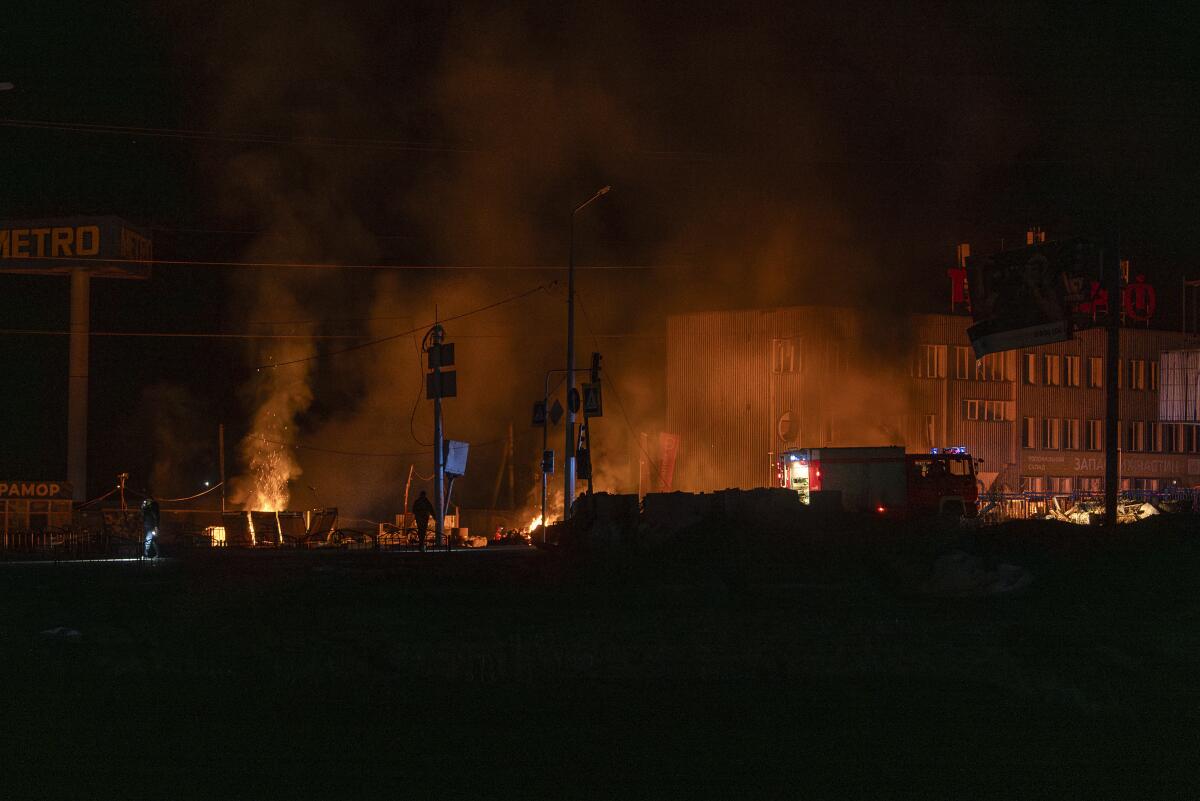
- Show more sharing options
- Copy Link URL Copied!
Russian missile strikes in Ukraine overnight and on Saturday killed eight people and wounded 12 more, officials said.
According to the governor of the Kharkiv region, Oleh Syniehubov, six people were killed and 11 were wounded in overnight missile attacks on the city of Kharkiv, Ukraine’s second largest. The attack damaged residential buildings, a gas station, a kindergarten, a cafe, a shop and cars.
On Saturday afternoon, a further strike on Kharkiv killed another person and left one more person wounded, said Kharkiv mayor Ihor Terekhov. Another missile strike killed a civilian in the southern Odesa region, its governor Oleh Kiper reported.
Overall, Russia fired 32 Iranian-made Shahed drones and six missiles at Ukraine overnight, according to the air force commander. Ukrainian air defense forces shot down three cruise missiles and 28 drones, Lt. Gen. Mykola Oleshchuk said in a statement.
“Russian killers continue to terrorize Ukrainians and attack Kharkiv and other peaceful cities,” he said.
Russia’s Defense Ministry said the overnight attacks targeted Ukraine’s military enterprises that “produced and repaired armored vehicles and vehicles, drones” as well as “military airfields” and areas where “foreign mercenaries” were allegedly stationed. The ministry claimed all the set targets were hit.
It also said that Ukraine on Saturday morning fired Vampire rockets at Russia. All 10 were shot down over Russia’s border region of Belgorod by air defense systems, the ministry said.
Belgorod Gov. Vyacheslav Gladkov said the rockets were shot down as they were approaching the city of Belgorod, the capital of the region of the same name, and added that 12 residential buildings in the city were damaged. In a nearby village, a private house burned down and several other buildings were damaged, Gladkov said.

World & Nation
In war-torn Ukraine, a woman searches for her husband. Will she find him?
In a Ukrainian village, a woman wants only one thing: to find her husband, who disappeared shortly after Russia’s war on Ukraine started two years ago.
Feb. 24, 2024
It wasn’t immediately clear from his statement whether the damage was inflicted by falling debris from the intercepted rockets or whether some of them actually hit those buildings.
On the ground in Ukraine, Russian forces were advancing, and pushing back against them was “difficult,” said Oleksandr Syrskyi, commander of Ukraine’s armed forces.
Syrksyi said the situation in the Bakhmut area in the partially occupied eastern Donetsk region was particularly challenging. He said Russian forces are carrying out offensive operations day and night, using assault groups with the support of armored vehicles, as well as assaults on foot.
Fierce battles are taking place east of the town of Chasiv Yar, which Ukraine still controls and which is located near the occupied city of Bakhmut.
Russian forces are trying to break through defensive lines there, Syrskyi said on the messaging app Telegram, adding, “Chasiv Yar remains under our control, all enemy attempts to break through to the settlement have failed.”
Near Avdiivka, another city in the Donetsk region held by the Russians, the fiercest battles were occurring in Pervomaiskyi and Vodyanyi, according to the official. He also said the situation is tense on the southern and northeastern parts of the front line.
More to Read
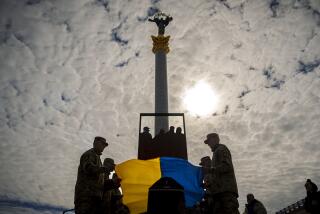
Ukraine says it destroyed Russian warplanes in one of its biggest drone attacks of the war
April 5, 2024
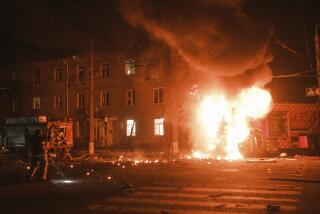
Drone attack kills 4 people in Ukraine’s second-largest city as Russia builds its war strength
April 4, 2024
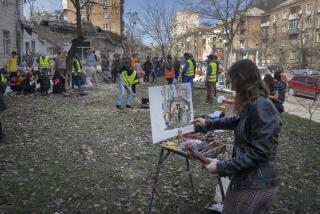
2 killed as Russia launches attacks on Ukraine’s energy infrastructure
March 31, 2024
Start your day right
Sign up for Essential California for news, features and recommendations from the L.A. Times and beyond in your inbox six days a week.
You may occasionally receive promotional content from the Los Angeles Times.
More From the Los Angeles Times

Status of Ukraine nuclear power plant is ‘extremely serious,’ U.N. watchdog says
April 9, 2024

Top military leaders face Congress over Pentagon budget, Israel and Ukraine support
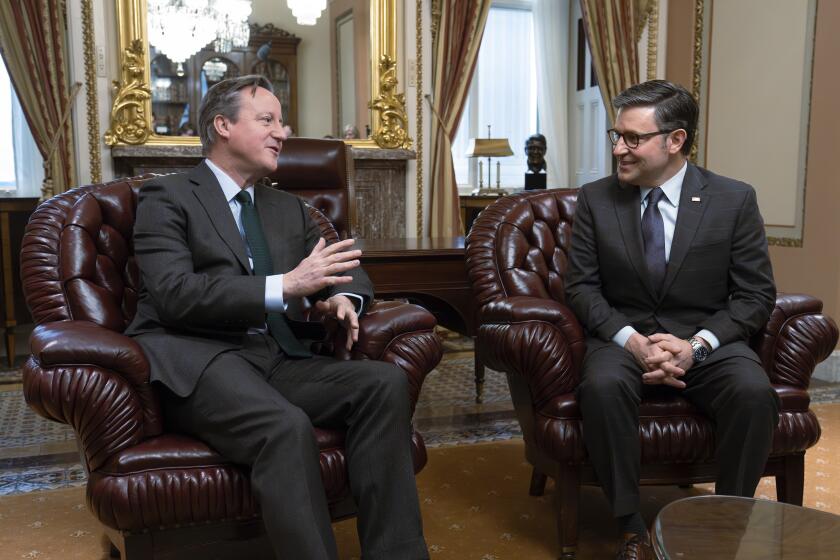
Britain’s David Cameron in D.C. for Ukraine talks, first presses Trump in Florida
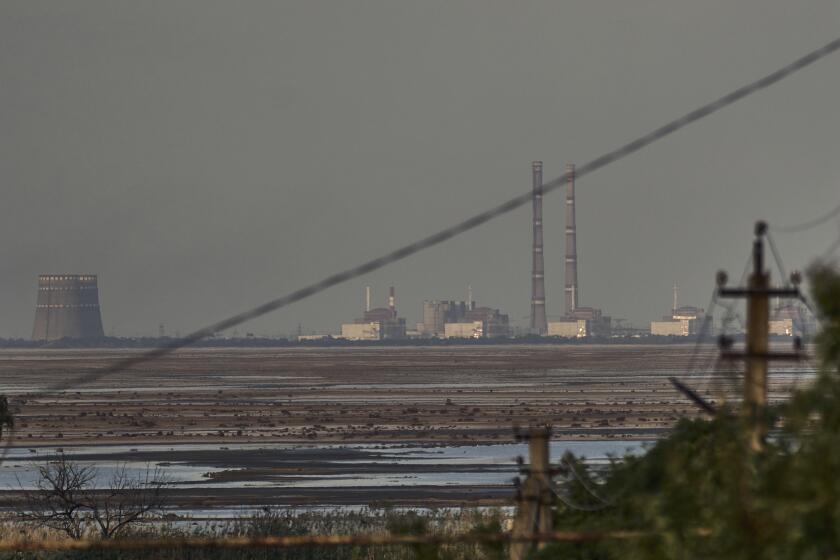
Ukraine and Russia trade fresh accusations of targeting a major nuclear power plant
April 8, 2024
- Election 2024
- Entertainment
- Newsletters
- Photography
- Personal Finance
- AP Investigations
- AP Buyline Personal Finance
- Press Releases
- Israel-Hamas War
- Russia-Ukraine War
- Global elections
- Asia Pacific
- Latin America
- Middle East
- Election Results
- Delegate Tracker
- AP & Elections
- March Madness
- AP Top 25 Poll
- Movie reviews
- Book reviews
- Personal finance
- Financial Markets
- Business Highlights
- Financial wellness
- Artificial Intelligence
- Social Media
Russian missile strikes in Ukraine kill 8 and wound 12
Russian forces overnight attacked Ukraine with drones and missiles, killing at least six people and wounding 11 more in Kharkiv, Ukraine’s second largest city, local officials reported. Governor of the Kharkiv region Oleh Syniehubov said missile strikes on the city damaged residential buildings, a gas station, a kindergarten, a cafe, a shop and cars.
Rescue workers extinguish the fire at the site of a Russian drone attack in Kharkiv, Ukraine, early Saturday April 6, 2024. At least 6 people were killed in Kharkiv in the overnight attacks on Saturday and at least 10 people were injured with blast wounds and shrapnel, said regional governor Oleh Syniehubov. High-rise buildings, a gas station, a shop and a car were damaged. (AP Photo/Alex Babenko)
- Copy Link copied
KYIV, Ukraine (AP) — Russian missile strikes in Ukraine overnight and on Saturday killed eight people and wounded 12 more, officials said.
According to the governor of the Kharkiv region, Oleh Syniehubov, six people were killed and 11 were wounded in overnight missile attacks on the city of Kharkiv, which is Ukraine’s second largest. The attack damaged residential buildings, a gas station, a kindergarten, a cafe, a shop and cars.
On Saturday afternoon, a further strike on Kharkiv killed another person and left one more person wounded, said Kharkiv mayor Ihor Terekhov. Another missile strike killed a civilian in the southern Odesa region, its governor Oleh Kiper reported.
Overall, Russia fired 32 Iranian-made Shahed drones and six missiles at Ukraine overnight, according to the air force commander. Ukrainian air defense forces shot down three cruise missiles and 28 drones, Lt. Gen. Mykola Oleshchuk said in a statement. “Russian killers continue to terrorize Ukrainians and attack Kharkiv and other peaceful cities,” he said.
Russia’s Defense Ministry said the overnight attacks targeted Ukraine’s military enterprises that “produced and repaired armored vehicles and vehicles, drones” as well as “military airfields” and areas where “foreign mercenaries” were allegedly stationed. The ministry claimed all the set targets were hit.
It also said that Ukraine on Saturday morning fired Vampire rockets at Russia. All 10 of them were shot down over Russia’s border region of Belgorod by air defense systems, the ministry said.
Belgorod Gov. Vyacheslav Gladkov said the rockets were shot down as they were approaching the city of Belgorod, which is the capital of the region of the same name, and added that 12 residential buildings in the city sustained damage. In a nearby village, a private house burned down and several other buildings were damaged , Gladkov said.
It wasn’t immediately clear from his statement whether the damage was inflicted by falling debris from the intercepted rockets or whether some of them actually hit those buildings.
Battles on the ground
On the ground in Ukraine, Russian forces were advancing, and pushing back against them was “difficult,” said Oleksandr Syrskyi, commander of Ukraine’s armed forces.
Syrksyi said the situation in the Bakhmut area in the partially occupied eastern Donetsk region was particularly challenging. He said Russian forces are carrying out offensive operations day and night, using assault groups with the support of armored vehicles, as well as assaults on foot.
Fierce battles are taking place east of the town of Chasiv Yar, which Ukraine still controls and which is located near the occupied city of Bakhmut .
Russian forces are trying to break through defensive lines there, Syrskyi said on the messaging app Telegram, adding, “Chasiv Yar remains under our control, all enemy attempts to break through to the settlement have failed.”
Near Avdiivka, another city in the Donetsk region held by the Russians , the fiercest battles were occurring in Pervomaiskyi and Vodyanyi, according to the official. He also said the situation is tense on the southern and northeastern parts of the front line.
Follow AP’s coverage of the war in Ukraine at https://apnews.com/hub/russia-ukraine
Watch CBS News
Russian missile strikes on Ukrainian city of Kharkiv leaves at least 6 dead
April 6, 2024 / 7:56 AM EDT / AP
Russian forces overnight attacked Ukraine with drones and missiles, killing at least six people and wounding 11 more in Kharkiv, Ukraine's second largest city, local officials reported.
Governor of the Kharkiv region Oleh Syniehubov said missile strikes on the city damaged residential buildings, a gas station, a kindergarten, a cafe, a shop and cars. Kharkiv is only about 18 miles from the eastern border with Russia.
Overall, Russia fired 32 Iranian-made Shahed drones and six missiles at Ukraine overnight, according to the air force commander. Ukrainian air defense forces shot down three cruise missiles and 28 drones, Lt. Gen. Mykola Oleshchuk said in a statement. "Russian killers continue to terrorize Ukrainians and attack Kharkiv and other peaceful cities," he said.
The Russian military has not commented on the strikes, but said that Ukraine on Saturday morning fired Vampire rockets at Russia. All 10 of them were shot down over Russia's border region of Belgorod by air defense systems, the Russian Defense Ministry said.
On the ground in Ukraine, Russian forces were advancing, and pushing back against them was "difficult," said Oleksandr Syrskyi, commander of Ukraine's armed forces.
Syrksyi said the situation in the Bakhmut area in the partially occupied eastern Donetsk region was particularly challenging. He said Russian forces are carrying out offensive operations day and night, using assault groups with the support of armored vehicles, as well as assaults on foot.
Fierce battles are taking place east of the town of Chasiv Yar, which Ukraine still controls and which is located near the occupied city of Bakhmut.
Russian forces are trying to break through defensive lines there, Syrskyi said on the messaging app Telegram, adding that "Chasiv Yar remains under our control, all enemy attempts to break through to the settlement have failed."
Near Avdiivka, another city in the Donetsk region held by the Russians, the fiercest battles were occurring in Pervomaiskyi and Vodyanyi, according to the official. He also said the situation is tense on the southern and northeastern parts of the front line.
In January, more than 40 Russian missiles slammed into Ukraine's two largest cities , killing at least seven and leaving 60 more wounded, according to Ukrainian officials, as Moscow again dismissed any diplomatic resolution to the two-year war backed by Kyiv and its Western supporters. The Russian missiles targeted Ukraine's capital Kyiv and Kharkiv, damaging about 30 residential buildings in the latter and shattering around 1,000 apartment windows, leaving residents exposed to frigid winter weather, regional Syniehubov said.
Mayor Ihor Terekhov of Kharkiv was quoted by the French news agency AFP as saying an entire section of a multi-floor apartment building was toppled and an unknown number of people left trapped under the rubble.
More from CBS News

Littleton schools bus aide accused of assaulting student with disabilities

Xcel Energy: Restoration of power could extend into Monday

Southwest flight to Houston returns to Denver due to safety issue
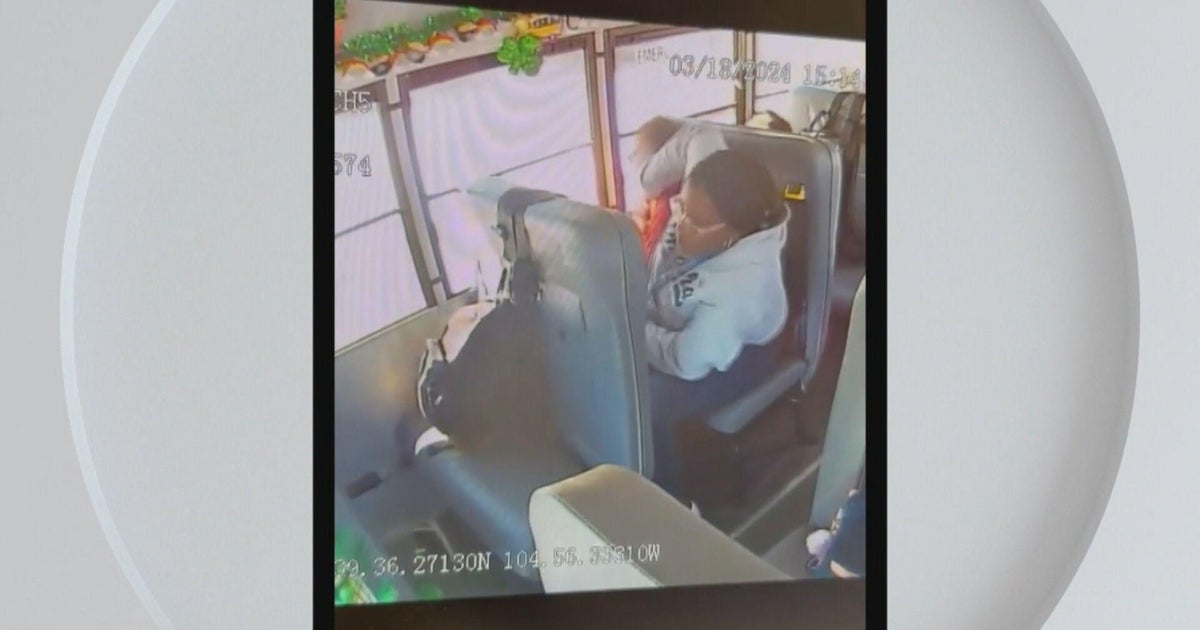
Littleton bus aide fired after students with autism "tortured and traumatized"

IMAGES
VIDEO
COMMENTS
A Russian military officer walks past the 9M729 land-based cruise missile on display in Kubinka outside Moscow in 2019. (AP: File) The relative calm that Kyiv enjoyed prior to the Kerch Bridge ...
FILE - A Russian military officer walks past the 9M729 land-based cruise missile on display with its launcher, right, in Kubinka outside Moscow, Russia, Wednesday, Jan. 23, 2019. As Russia bombarded Ukraine this week, military observers were left wondering about how many and what types of missiles Russia still has in its arsenal.
On June 13, Russia launched a cruise missile attack against Kryvyi Rih. At least one of the four missiles that got through Ukraine's defenses struck an apartment building, killing 11. Overall, the performance of Ukraine's air defenses has steadily improved since the start of the war, particularly against Russian cruise missiles.
Kalibr (missile family) The Novator Kalibr (Калибр, caliber ), also referred to as 3M54-1 Kalibr, 3M14 Biryuza (Бирюза, turquoise ), ( NATO reporting name SS-N-27 Sizzler and SS-N-30A) is a family of Russian cruise missiles developed by NPO Novator ( OKB-8 ). It first saw service in 1994. There are ship-launched, submarine-launched ...
Ukraine's Neptune missiles have a range of about 190 miles, far shorter than Russia's sea-launched cruise missiles, some of which can reach 1,550 miles. Show more Advertisement
Weapons investigators in Kyiv found that at least one Russian Kh-101 cruise missile used in widespread attacks there on Nov. 23 had been made no earlier than October. Russia attacked the port of ...
When the Russian military unleashed missile attacks across Ukraine starting Monday, it used the entire range of its long-range precision weapons: the Kh-55 and Kh-101 cruise missiles fired by ...
A residential building in Kyiv that was hit by a missile on Tuesday. The attack that day, one of the broadest since the Russian invasion began, caused blasts in at least six regions of Ukraine ...
The chart says Russia went from 900 Iskander ballistic missiles to 119, making only 48 new ones in this period. Reznikov claimed that Russia had spent 391 of its 500 Kalibr cruise missiles, while making 120 new ones. For Kh-101 cruise missiles, 132 were used, while 144 were left in stockpile, with 120 newly manufactured.
Ukraine says Russia fired 83 cruise missiles on Monday and 28 on Tuesday, and that it shot down at least 43 of them on Monday and 20 on Tuesday. Moscow said on Monday it fired more than 70 and all ...
Ukrainian Air Force says it shot down 23 Russian cruise missiles. All but two of 25 cruise missiles fired by Russia against Ukraine overnight Tuesday were intercepted by the country's air defenses ...
The massive Russian missile attacks against Ukraine in recent days together with evidence of the increasing efficiency of Ukraine's air and missile defense make it necessary to re-examine the state of Russia's arsenal of cruise, ballistic and air-launched missiles with a range of more than 300 kilometers (Ukrainska Pravda, May 17; The Moscow Times; Kyiv Independent, May 18). The following …
Besides Kh-101 and Kh-59 weapons, a wide variety of other Russian air launched cruise missiles have been found in Ukraine including Kh-22, Kh-29, Kh-31, Kh-47M2 Kinzhal and Kh-555 types, according ...
December 2, 2016. Missile Defense Project. The SS-N-26 "Strobile" (P-800 Oniks)/Yakhont/Yakhont-M are Russian anti-ship cruise missiles developed by NPO Mashinostroyenia. There are three known variants of the missile. The ship-launched variant is known as the P-800 Oniks and has been designated the SS-N-26 "Strobile" by NATO.
Ukrainian officials say Russia has fired 30 cruise missiles against various parts of the country in the latest nighttime test of Ukrainian air defenses which shot down 29 of them. Kyiv officials said defense systems also shot down two exploding drones and two reconnaissance drones early Thursday. A military spokesman said one person died and two were wounded by a Russian missile that got ...
Ukraine's air force said the country's air defenses shot down all eight drones launched by Russia, but only 18 of the 51 Russian cruise missiles deployed in overnight attacks. The Ukrainian ...
Russia fired 31 ballistic and cruise missiles at Kyiv before dawn Thursday in the first attack on the Ukrainian capital in 44 days, officials said. (AP video/Anton Shtuka) ... burned parked cars and left craters in streets and a small park. Some streets were littered with debris, including glass from shattered windows.
The Russian Defense Ministry said that the Ukrainian armed forces "launched a strike with 10 cruise missiles against the S. Ordzhonikidze ship repair plant in the city of Sevastopol.". It ...
Russia has launched four cruise missiles at Ukraine from the Black Sea on Saturday, the Air Force Command of the Ukrainian Armed forces said Saturday on Telegram. "On February 18 Russian ...
Ukrainian air defenses shot down 10 of 14 cruise missiles fired by Russia in deadly strikes overnight, the General Staff of the Armed Forces of Ukraine said Tuesday. ... On the left flank in ...
A Russian cruise missile strike on infrastructure in Ukraine's western Lviv region has left one person dead while another died in an attack in the northeast. ABC News.
By refusing to supply Taurus long-range cruise missiles to Ukraine despite an outcry among western allies, Olaf Scholz may be hoping that history will repeat itself and he can replicate Gerhard ...
Overall, Russia fired 32 Iranian-made Shahed drones and six missiles at Ukraine overnight, according to the air force commander. Ukrainian air defense forces shot down three cruise missiles and 28 ...
Russian forces overnight attacked Ukraine with drones and missiles, killing at least six people and wounding 11 more in Kharkiv, Ukraine's second largest city, local officials reported. Governor of the Kharkiv region Oleh Syniehubov said missile strikes on the city damaged residential buildings, a gas station, a kindergarten, a cafe, a shop ...
Russia bombards Kyiv, Kharkiv after Putin promises to intensify attacks 02:41. Russian forces overnight attacked Ukraine with drones and missiles, killing at least six people and wounding 11 more ...